

Exploring Intramuros In Manila – 11 Things You Have To Do!
Nestled within the bustling heart of Manila lies Intramuros, a historic walled city that stands as a testament to the Philippines’ rich colonial past. This fortified area, known as the “Walled City,” is a treasure trove of history, culture, and heritage, offering a journey back in time through its ancient streets and magnificent structures.
Whether you’re a history enthusiast, a cultural explorer, or simply looking for a unique travel experience, Intramuros promises an adventure that’s both enlightening and unforgettable.
What Is Intramuros
Intramuros, the walled city nestled in the heart of Manila, Philippines, stands as a testament to the country’s history. Conceived in the late 16th century during the Spanish colonial era, it was built with defensive walls meant to protect the seat of the Spanish government.
Over the centuries, Intramuros has witnessed pivotal moments in Philippine history -from the Spanish colonial period through British occupation, American colonization, and Japanese invasion during World War II, to the country’s eventual fight for independence.
Despite suffering considerable damage during the Battle of Manila in 1945, Intramuros has risen from the ruins, preserving its historic structures and cobblestone streets, making it a living museum of Spanish colonial architecture and heritage. Today, Intramuros is more than just a historical site; it’s a vibrant enclave that houses ancient churches, schools, museums, and government buildings.
Intramuros is a cultural and educational hub that attracts students, historians, artists, and tourists. It’s an ancient site that speaks to the resilience and faith of the Filipino people, making it an essential destination for anyone looking to delve deep into the soul of the Philippines. All of this is why Intramuros is so famous and the hotspot for tourists in Manila.
Highlights Of Intramuros
There are several ways to get around Intramuros. The most common ways are to just walk by yourself, or join a guided tour which I recommend doing! There are also guided tours on bicycles, which is a good way to get around Intramuros.
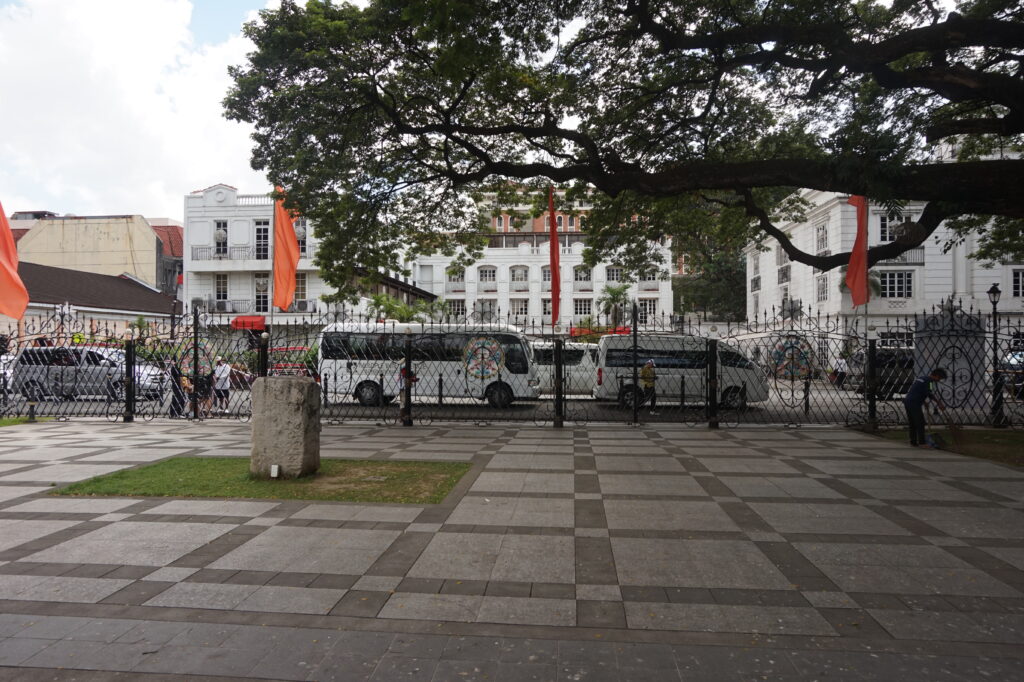
Fort Santiago
A visit to Fort Santiago is a must-do It is also good to start here on your day around in Intramuros
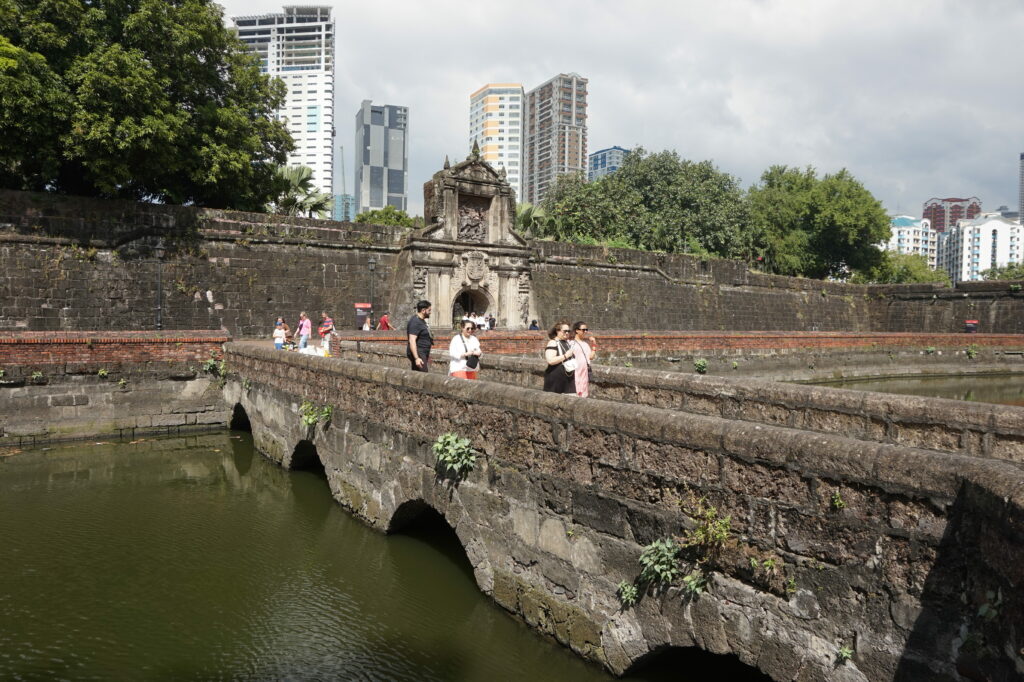
Recently opened to the public, the dungeons of Fort Santiago offer a poignant glimpse into the darker side of history. Once used to detain political prisoners, these dungeons remind visitors of the sacrifices made in the fight for freedom and independence.
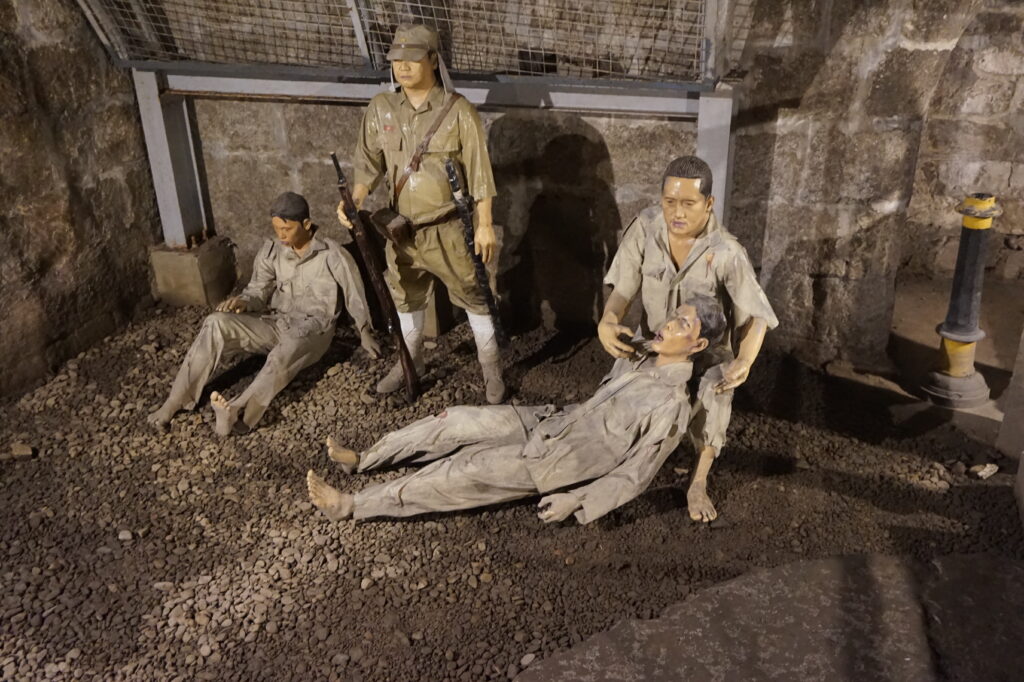
While Fort Santiago is a significant part of Intramuros, it’s just one of the many attractions within the walled city. Fort Santiago served as a military fortress and prison, while Intramuros encompasses a larger area with several historical and cultural sites.
Rizal Shrine
Dedicated to the Philippines’ national hero, Dr. José Rizal, the shrine within Fort Santiago is a homage to his life and works. This spot, where Rizal spent his final days, is a place of reflection and inspiration, honoring his contribution to Filipino identity and independence.
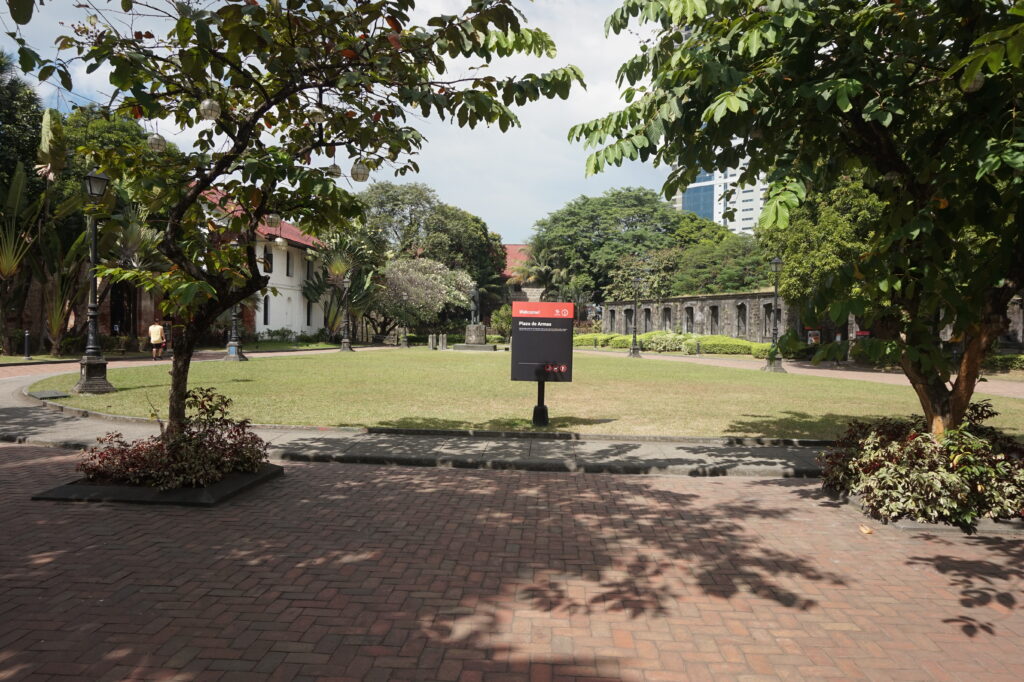
San Agustin Church
Standing as the oldest stone church in the Philippines, San Agustin Church is not just a stunning example of Baroque architecture but also a UNESCO World Heritage site. The church’s ornate interior, coupled with its historic museum, provides a deep dive into the religious art and artifacts that played a significant role in Filipino spirituality.
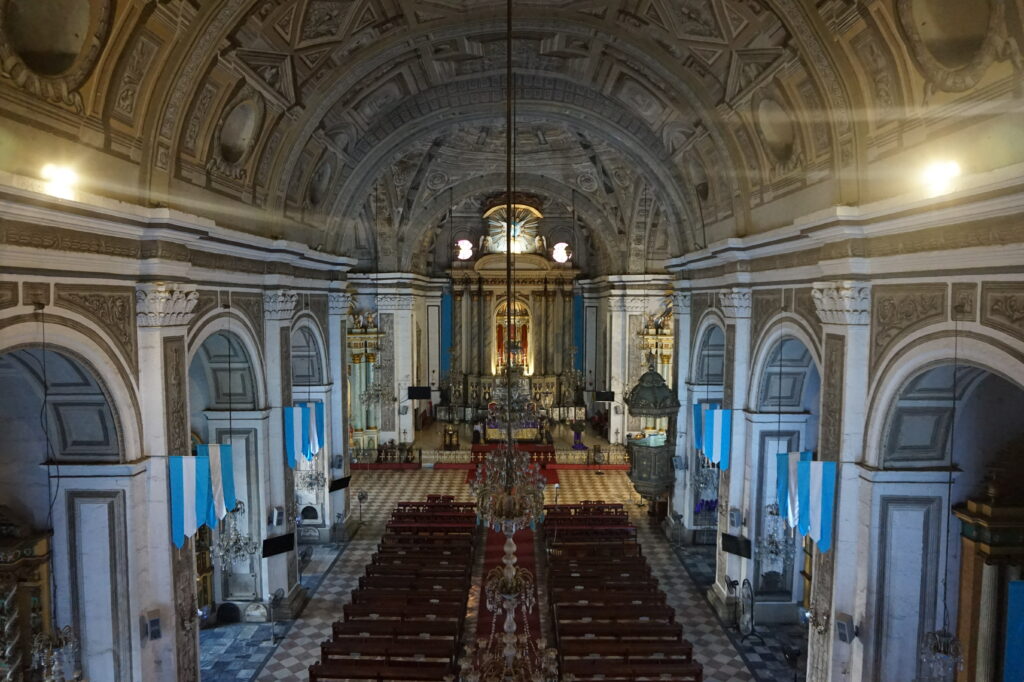
Manila Cathedral
A visit to Intramuros wouldn’t be complete without admiring the Manila Cathedral. Known for its impressive façade and richly decorated interior, the cathedral has been a symbol of Filipino Catholicism through centuries, surviving wars and natural disasters to stand proudly as the Mother Church of the Philippines.
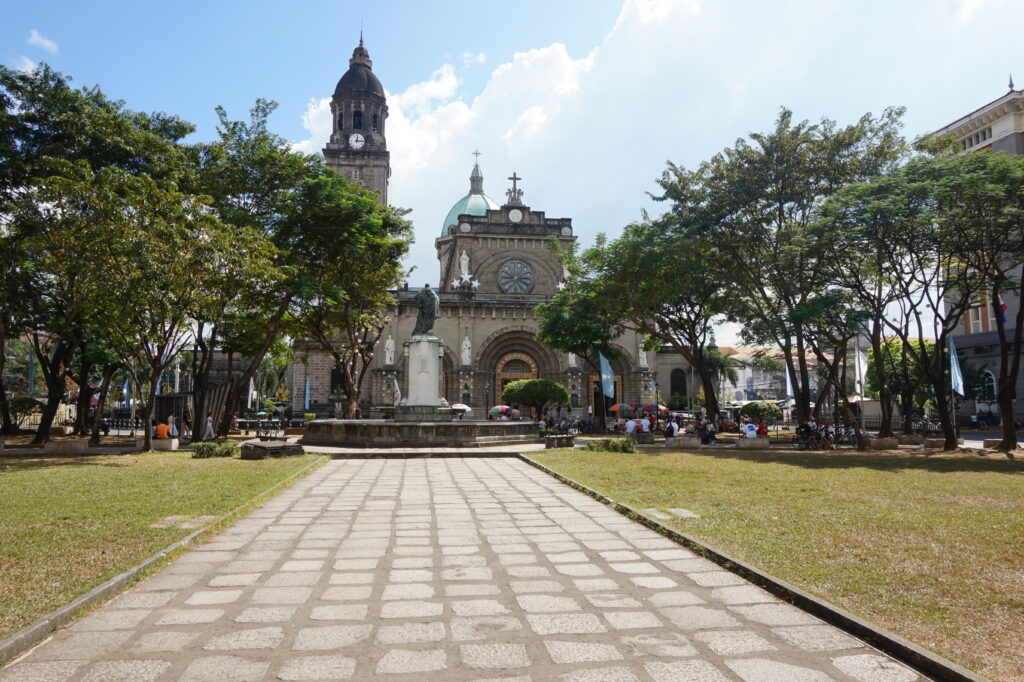
Casa Manila
Casa Manila transports offers a peek into the colonial lifestyle. This museum, replicated to mimic a Spanish colonial mansion, is furnished with period-appropriate décor, showcasing the opulence and intricacies of Manila life under Spanish rule.
Barbara’s Heritage Restaurant
For those looking to satiate their culinary curiosity with traditional Filipino cuisine, Barbara’s Heritage Restaurant is the place to be. Set in a colonial ambiance, the restaurant offers not just delicious meals but also cultural performances, providing a taste of Filipino heritage in more ways than one.
Bahay Tsinoy
This museum is a testament to the enduring influence of Chinese Filipinos in the nation’s development. Bahay Tsinoy meticulously documents the contributions and integration of Chinese culture within Filipino society, offering visitors a comprehensive look at this integral aspect of the Philippines’ cultural mosaic.
Baluartes (Bastions) and the Walls of Intramuros
The defensive walls of Intramuros, punctuated by its baluartes, offer not just panoramic views of the city but also tales of resilience and strategic military architecture. These bastions, each with its own history, served as the first line of defense, protecting the city from invasions.

San Diego Gardens and the Baluarte de San Diego
The lush San Diego Gardens, surrounding the circular fortification of Baluarte de San Diego, offer a tranquil escape within the city. The gardens not only provide a serene spot for relaxation but also a picturesque setting for photography enthusiasts.
Intramuros Walk and Bambike Ecotours
Bambike Ecotours provide an eco-friendly way to explore Intramuros on bikes, combining sustainability with cultural immersion. There are also several other walking tours around Intramuros. I will recommend going on a guided tour, but be sure to check the reviews before you go!
Puerta del Parian and Puerta de Isabel II
These historic gates, once the main entrances to Intramuros, stand as architectural reminders of the city’s past. Each gate tells its own story, welcoming visitors to explore the rich history that lies within.
Is Intramuros Worth Visiting?
Absolutely. Intramuros is more than just a historic site; it’s a living museum that offers visitors a rich tapestry of experiences. From exploring ancient fortresses and majestic churches to witnessing traditional Filipino crafts and tasting local cuisine, a visit to Intramuros is a journey through the heart and soul of Filipino heritage.
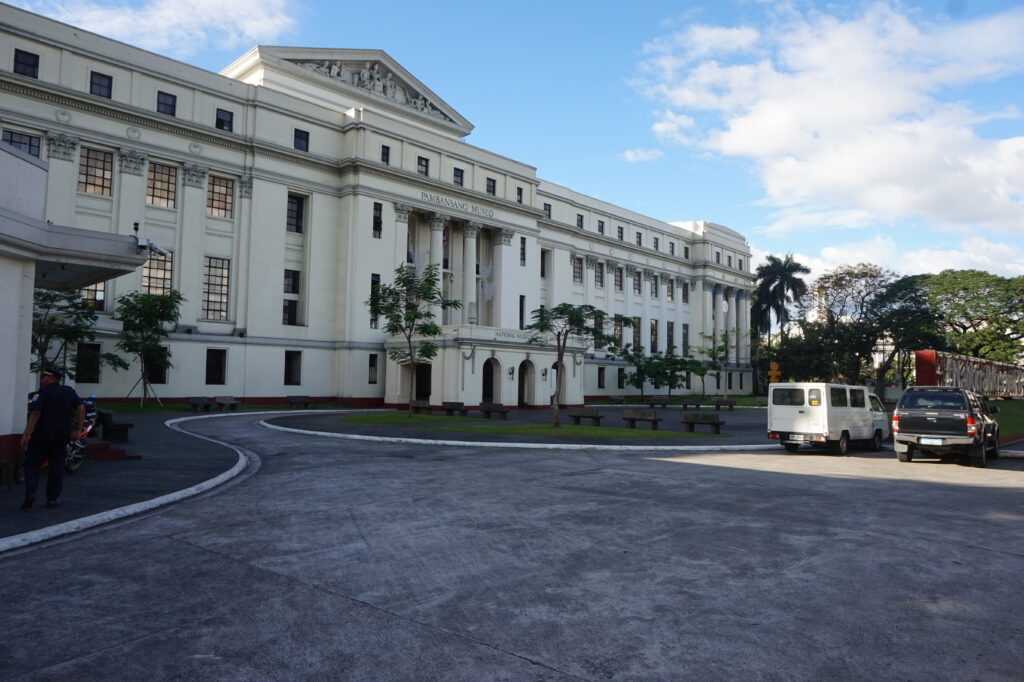
Can You Go Inside Intramuros?
Yes, visitors are free to explore the cobblestone streets and public spaces within Intramuros. While some attractions require an entrance fee, many of the district’s landmarks and its encompassing walls are accessible to everyone, inviting exploration and discovery.
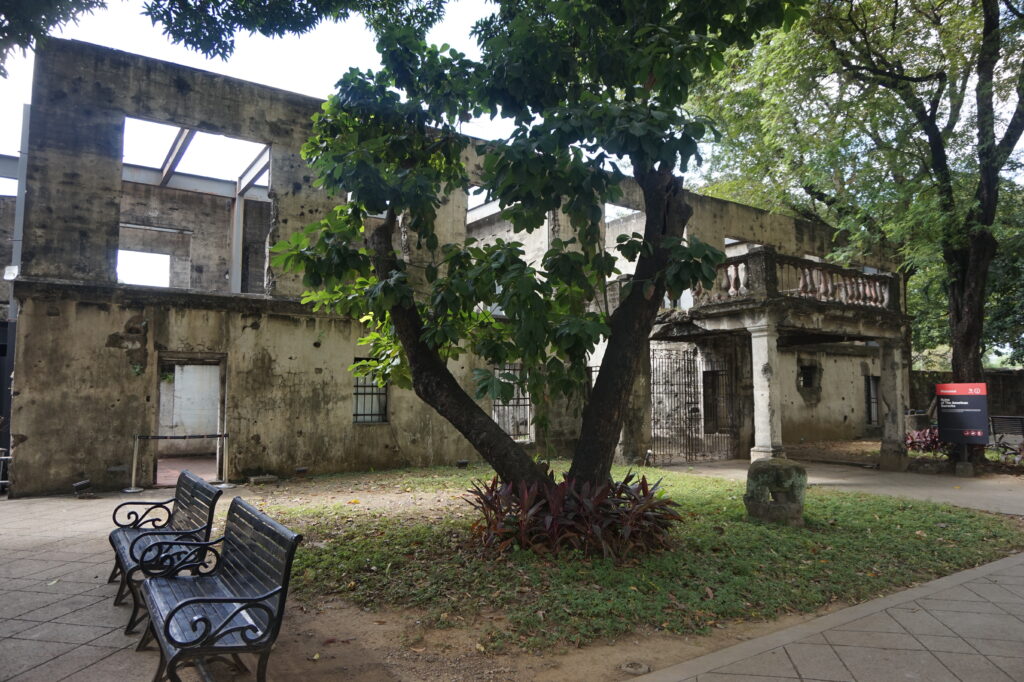
Dress Code and Visitor Etiquette
While Intramuros welcomes all visitors, it’s important to remember that it is home to several active places of worship. A respectful dress code is encouraged, especially when entering churches like Manila Cathedral and San Agustin Church. Modest attire that covers shoulders and knees is advisable.
Safety in Intramuros
Intramuros is generally safe for tourists, including at night when the district takes on a magical ambiance with illuminated streets and landmarks. However, like any busy urban area, it’s wise to stay vigilant, especially after dark, and stick to well-lit, populated areas.
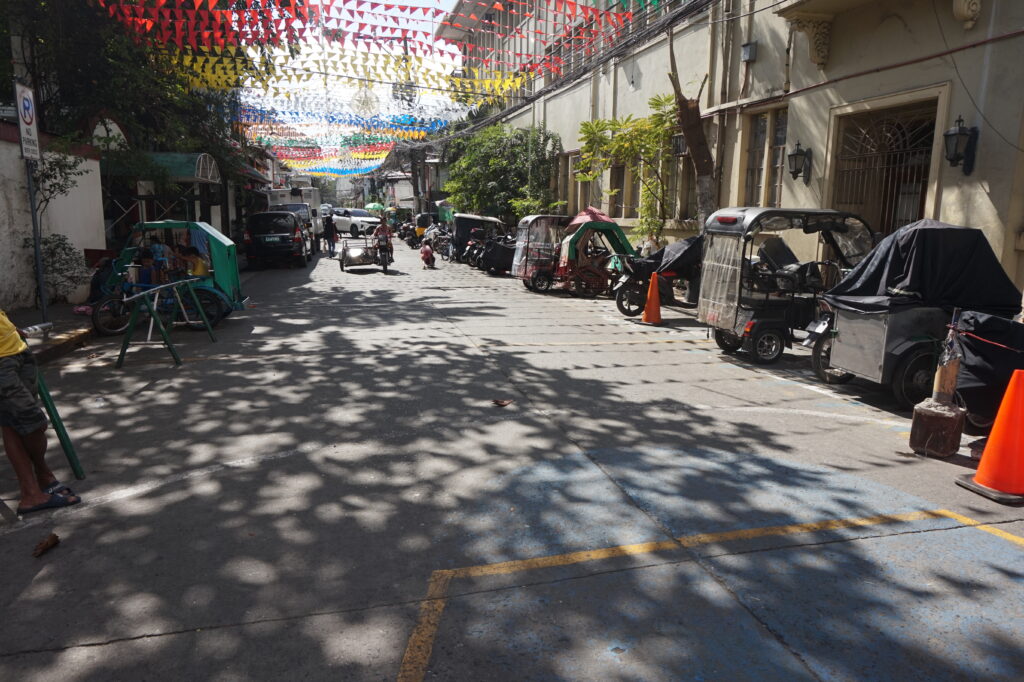
Intramuros is unparalleled in its ability to offer a comprehensive look at Manila’s historical and cultural evolution. From the architectural wonders of its churches and fortifications to the immersive experiences of its museums and guided tours, Intramuros stands out as a cornerstone of Philippine tourism.
How to Get to Intramuros
Intramuros is accessible by various means of transportation. Visitors can take a taxi, ride a jeepney, or use the Light Rail Transit (LRT) to get to this historic district. For those driving, parking options are available around Intramuros.
Similar Posts
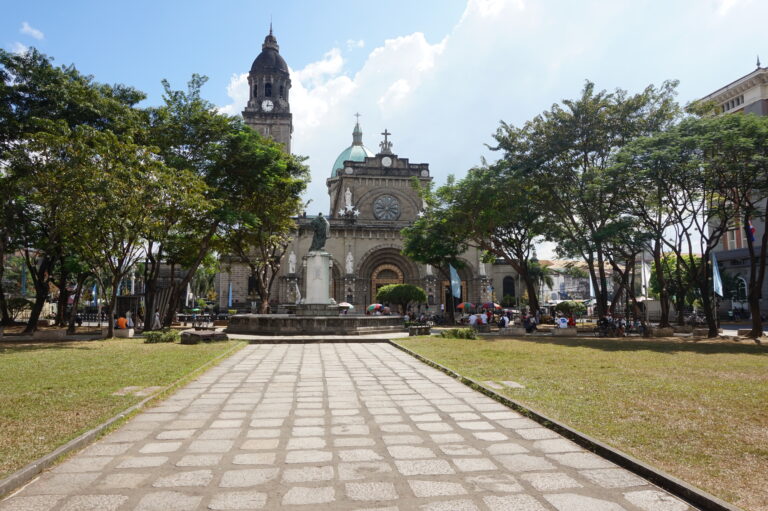
Manila Cathedral Visitor Guide
The Manila Cathedral is located in the historic walled city of Intramuros and is considered an architectural masterpiece. With a rich history and spiritual significance, it has witnessed the country’s colonial past and its journey towards independence. Visiting the Manila Cathedral offers a unique glimpse into the soul of Filipino heritage, making it a must-see…
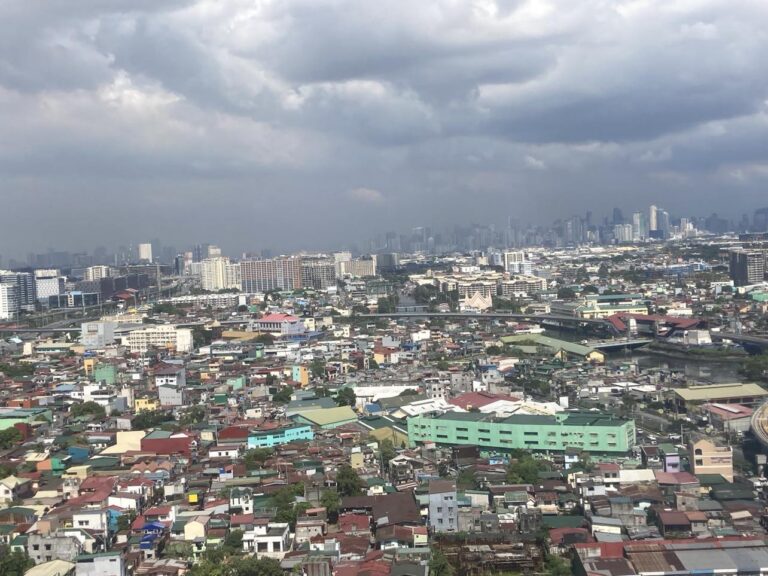
What To Do In Manila – 9 Must-Do Activities
Manila is a vibrant city with history, and a mix of cultures, making it a perfect destination for any type of traveler. The city boasts a rich history that is evident in its historical walls, but also offers modern shopping centers that are sure to impress. No matter what your interests are, be it history,…
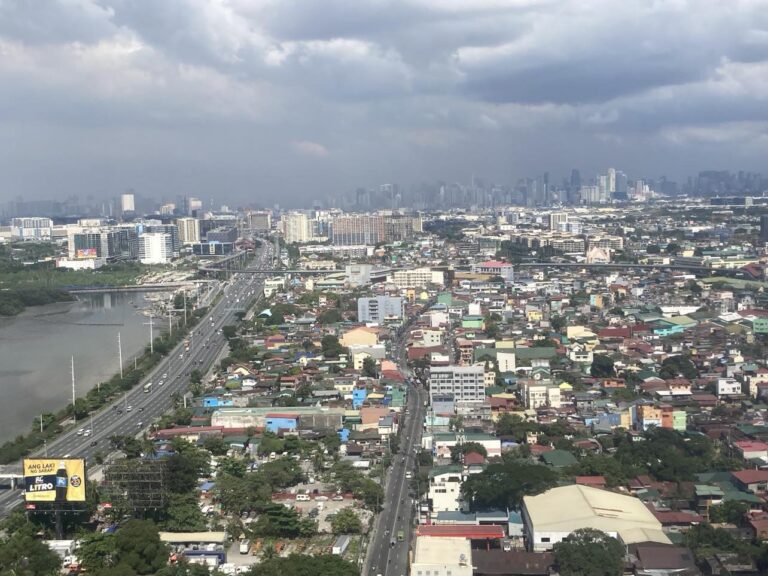
Manila For Digital Nomads – My Experience Staying In Manila For One Month
When I made the decision to spend a month in Manila as a digital nomad, I knew I was in for an unconventional adventure. Manila is not a typical digital nomad hotspot like Bali, Chiang Mai, or Siargao, but that’s what made it more intriguing for me. I had to change my flight anyways in…
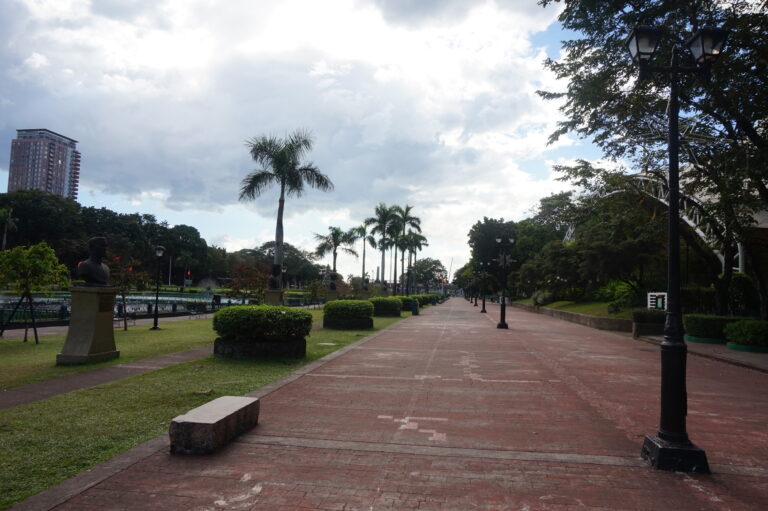
Rizal Park Manila – Visitor’s Guide to the Heart of Filipino Heritage
Rizal Park, which is also known as Luneta Park, is a significant landmark located in the center of Manila, Philippines. It holds great importance as it symbolizes the freedom and courage of the Filipino people. This extensive guide provides an in-depth understanding of the essence of Rizal Park, highlighting why it is a must-see attraction…
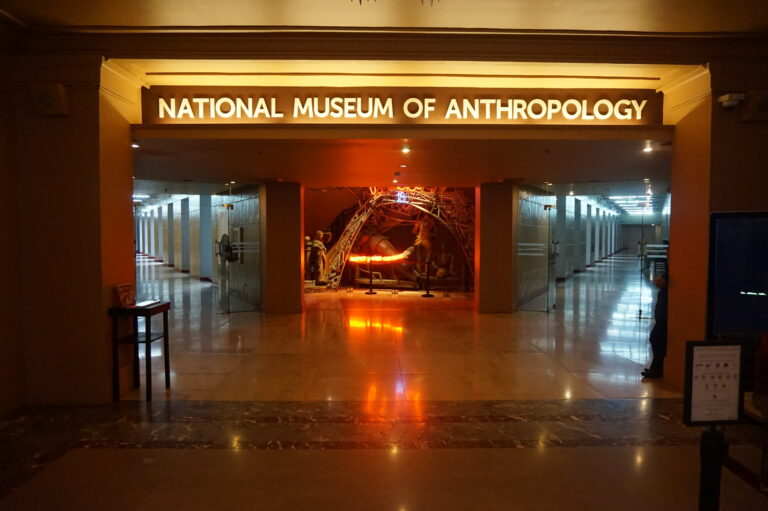
Complete Visitor Guide to the National Museum of Anthropology – Manila, Philippines
The National Museum of Anthropology in Manila is an important symbol of the rich cultural heritage and history of the Philippines. Located in the heart of the bustling capital city, the museum provides visitors with a deep understanding of the diverse tapestry of Filipino life, traditions, and civilizations that have shaped the nation. This comprehensive…

Visiting Fort Santiago in Manila – Complete Guide!
Fort Santiago, located in the heart of Manila’s historic Intramuros district, is a symbol of the Philippines’ rich and turbulent history. It’s a must-visit in Manila, and you should plan to spend about one hour. Plan Your Visit to Fort Santiago! It can be very hot! make sure to use plenty of sun cream and…
Leave a Reply Cancel reply
Your email address will not be published. Required fields are marked *
Save my name, email, and website in this browser for the next time I comment.
Walking Tour of Intramuros
This is where Manila was Born
:max_bytes(150000):strip_icc():format(webp)/mike_borobudur-5b6d3ea446e0fb0025fcb683.jpg)
Michael Runkel / Getty Images
For hundreds of years, the walled city of Intramuros was Manila : the nerve center of the Spanish occupation in the Philippines , home to several thousand Spanish colonists, their families, and their Filipino servants.
Intramuros was erected on the ruins of a Malay settlement at the mouth of the Pasig River. Its strategic location attracted the attention of the conquistador Miguel Lopez de Legazpi, who took over the area in 1571 and proclaimed it as the Philippine colony's new capital.
For 400 years, Intramuros was the center of Spanish political, religious, and military power in the region. (Read about churches in the Philippines .) The walled city suffered grievously through World War II; only San Agustin Church was left standing by war's end.
In the 1980s, the government led a major restoration effort that reconstructed Intramuros to its present state. Today, Intramuros is a prominent tourist spot where visitors can experience Spanish-era Manila through the walled city's churches, restaurants, and museums.
Beginning Your Intramuros Walking Tour
Begin at the Intramuros Visitors' Center at the restored Baluartillo de San Francisco Javier in Fort Santiago ( Google Maps ). This is an ideal jumping-off point for many walking tours through Intramuros, or independent visits to Intramuros' top sights .
At the Center, you can pick up brochures on the places you plan to see or find out about scheduled cultural events in the Walled City.
Fort Santiago is easily accessible via taxi, jeepney, or LRT (the Central Terminal Station is the closest stop). Read about Manila's commuter rail system for more details.
The tour will take about two hours and involves a fair amount of walking. We recommend you avoid walking in the middle of the day; limit your trips to before 9am, or after 4pm to avoid sunstroke or sunburn .
To fully enjoy your trip, you'll need:
- a carry bag for souvenirs
- comfortable shoes
- bottled water
First Stop: Fort Santiago
Fort Santiago ( Google Maps ) was built by Spanish conquistadors in 1571, replacing the destroyed fortress belonging to the last datu (king) of pre-Hispanic Manila.
Over the years, Fort Santiago served as a fortress against marauding Chinese pirates, a prison for Spanish-era political prisoners, and a Japanese torture chamber in World War II. American bombs deployed during the Battle for Manila almost succeeded in destroying the Fort altogether.
A postwar government initiative helped restore Fort Santiago and clean its bad juju away. Today, Fort Santiago is a relaxing place to visit and an enlightening portal into the Philippines' colonial past. It contains a peaceful park, battlements overlooking the Pasig River, and a memorial museum to the Philippines' national hero Jose Rizal.
For more information, read our overview of Fort Santiago in the Philippines .
Next Stop: Manila Cathedral
Exit the main gate of Fort Santiago and make a five- to ten-minute walk southeast down General Luna Street, past the Plaza Moriones and the Palacio del Gobernador. The Cathedral will be visible to your left.
The Manila Cathedral (Cabildo cor. Beaterio Streets, Intramuros; Google Maps ) is the ecclesiastical seat of the Archdiocese of Manila. In Spanish colonial times, this was the seat of the Spanish Archbishop of Manila, who had jurisdiction over the entire archipelago .
This structure is actually the sixth church to occupy the site. The first one, built in 1581, was razed to the ground two years after it was built. The present structure was completed in 1958.
The Cathedral's crypts serve as a final resting place for former Archbishops of Manila, just as the crypts of St. Peter's in the Vatican do for the bodies of former Popes. Among those interred in the Cathedral's crypts is Jaime Cardinal Sin, one of the ringleaders of the 1986 Edsa Revolution that ousted the dictator Ferdinand Marcos.
Next Stop: Walls of Intramuros/Puerta de Santa Lucia
A further five-minute walk down General Luna Street in the same direction; after two blocks, turn right and walk down Calle Real until you reach Puerta de Sta. Lucia.
Facing the former Malecon Drive (now Bonifacio Drive), Puerta de Santa Lucia ( Google Maps ) is one of several gates passing through the Intramuros walls. First built in 1603, Puerta de Santa Lucia (when open) leads out to Malecon, once a waterfront promenade before reclamation transformed the shores in front of the walls into the present-day Port Area.
Passersby get a close-up look at the thick stone walls and moats that skirt Intramuros' borders, as the walls can actually be climbed for a commanding view of the streets within Intramuros and the golf course beyond the wall.
During Manila's colonial heyday, no one could enter Intramuros but the Spanish, their servants, and mestizos (half-Spanish Filipinos). Outside Manila lived Filipinos and Chinese merchants. The latter were forced to live in a ghetto that was conveniently located within range of Intramuros' cannons, in case the Chinese revolted against Spanish rule.
Next Stop: San Agustin Church and Museum
Go back up Calle Real, turn right on Gen. Luna Street and enter the parking lot of San Agustin Church immediately on your right.
The San Agustin Church (Calles Gen Luna and Real, Intramuros; Google Maps ) is the first European stone church designed along Spanish lines in Manila. It has 14 side chapels, hand-carved hardwood pews dating back to the 17th century, an 18th-century pipe organ, and a beautiful trompe l'oeil ceiling. Beside the church is a small museum featuring Spanish-era vestments, furniture, and religious artwork.
Along with three other ancient Philippine churches, San Agustin Church was designated a UNESCO World Heritage Site in 1993.
Its walls have stood as a mute witness to Philippine history. Three Spanish conquistadors are buried here. In its vestry, Spanish and American commanders discussed the city's terms of surrender during the Spanish-American War. Japanese soldiers massacred 140 people on the premises during World War II, as the American troops approached Intramuros.
For the bloody details, read our overview of San Agustin Church .
Next and Final Stop: Casa Manila
Go back the way you came, through the parking lot—cross the street to get to the Plaza San Luis Complex.
Plaza San Luis (Calle Real del Palacio, Intramuros; Google Maps ) was a pet project of Imelda Marcos (she of the 7,000 shoes): its centerpiece is Casa Manila , a reconstruction of a Spanish colonial home of the 19th century. (The whole structure itself dates back only to 1981.)
Each room in Casa Manila is decorated in period style, complete with antique furniture, fixtures, and artwork.
Beyond Casa Manila, the Plaza San Luis Complex contains several other stops that will hold any tourist's interest: the White Knight Intramuros budget hotel; Puesto Manila , a creative hub and cafe; Barbara's, a Filipino restaurant; and Bambike Ecotours , which takes guests on tours of top Manila stops using bamboo bikes.
Top 10 Indispensable Intramuros, Philippines Stops
10 Things to Do in Luzon, the Philippines
Guide to Fort Santiago, Intramuros, Manila
Guide to San Agustin Church, Intramuros, Philippines
Travel Guide to Intramuros, Manila, Philippines
13 Best Things to Do in Manila, the Philippines
Philippines' Top Churches
8 Sacred Sites in Southeast Asia
Cubas Capital City of Havana
10 Things to Do in Downtown San Jose
Top UNESCO World Heritage Sites in Southeast Asia
The 17 Best Things to Do in Mexico City
Philippines Fiestas
Madrid on a Budget
Discover the Beauty of San Miguel de Allende
20 Best Things to Do in Florence, Italy
Jude The Tourist

Intramuros Guide 2023: A Tour in the Beautiful Walled City of Manila
- February 22, 2023
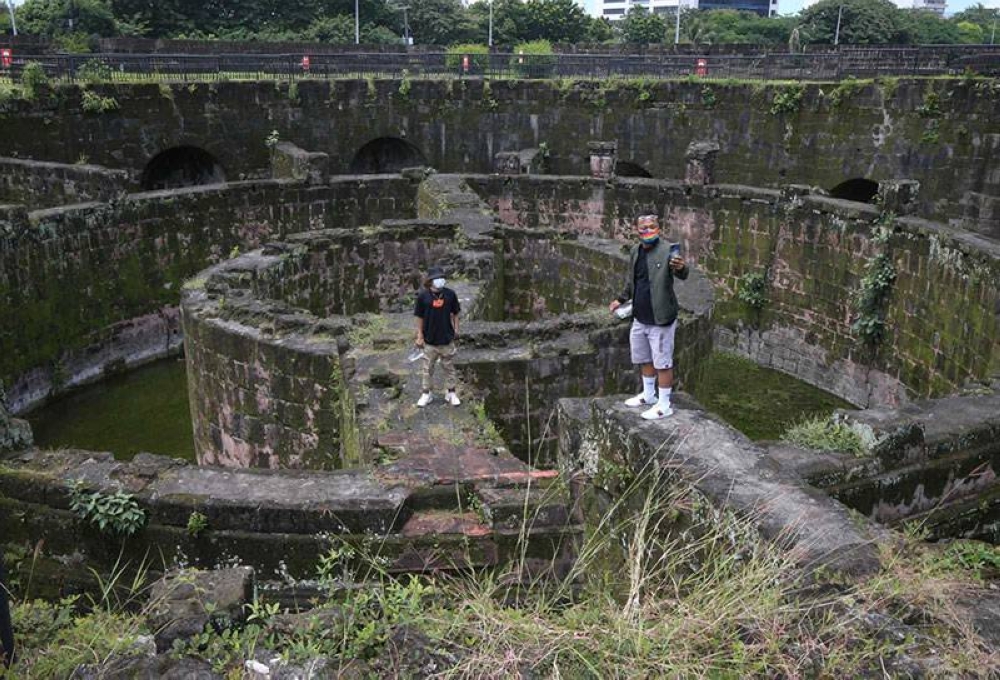
By: Jillian Dionela
Casa Manila
6. ride a bambike, types of accomodation:, history of intramuros.
The Walled City of Intramuros in Manila City is located south of the Pasig River and east of Manila Bay. It was constructed by Spanish colonizers in the mid 1500s after their arrival to serve to establish their military and political bases in Asia.
Intramuros was constructed as a city with a privileged status with churches, schools and government structures. These walls were later built to safeguard Intramuros from natural disasters as well as intruders. Intramuros was the capital of power during Spanish rule.
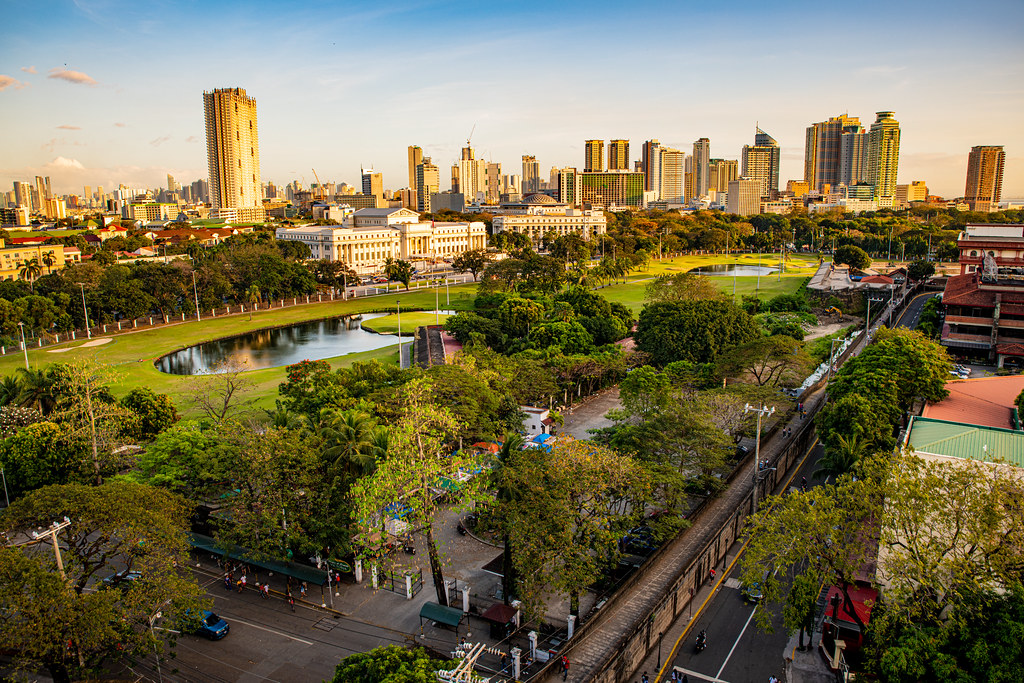
In addition to the 4.5-km. wall, which is where the name originated (“within within the wall”) there were other defensive structures were built to surround the city like moats, cannons, bulwarks and javelins. The wall not only protected Intramuros from natural disasters, but it also deterred the threat of Chinese pirates, Dutch force, Chinese pirates, Dutch forces and other intruders.
While heavily inspired by Spanish architecture (think extravagant baroque church designs) Renovations have also exposed the Chinese influences. In the 80s, government officials facilitated an enormous restoration effort that restored Intramuros to the present condition.
The fact that it is no longer an eye-sore, however. The history behind the ruin is what makes it an important place to visit in Manila even today despite the changes it has seen.
Additionally to that, fortresses, ramparts and gates of the past remain open and are the mainstay of walks and cultural events for tourists who want to know more about the country’s history. In the present, Intramuros is a prominent tourist attraction where you are able to experience the Spanish-era Manila through the city’s walls, restaurants, churches and museums.
How to go to Intramuros
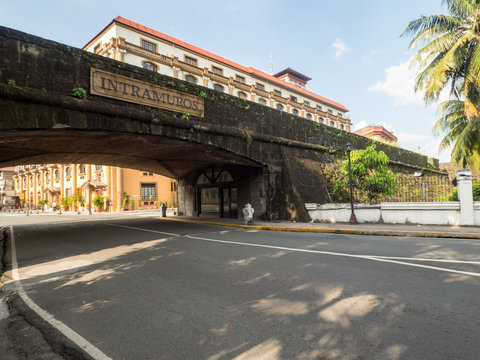
At Quezon Avenue in Quezon City take a jeepney, or van that is bound to Buendia. The driver may request to drop the passengers on Liwasang Bonifacio (also widely known as its previous designation, Plaza Lawton). If you’re at Liwasang Bonifacio, it’s just one short stroll to Intramuros.
If there are no Buendia-bound vehicles on the road then you could opt for either a jeepney or a van that goes to Quiapo. From Quiapo you can take a jeepney to Pier 15 that passes within Intramuros.
If this is your first time visiting Intramuros and you’re a bit unsure concerning public transportation then you could take a taxi or utilize the mobile app of Grab.
What to see and do in the Intramuros
The city’s walls aren’t very large, and when compared to other tourist spots located in Metro Manila, there are very few activities and sights are accessible inside the walled city.
The best part about visiting the Walled City is that each place you visit is rich in historical significance and is just an easy walk from one another. Here are a few of the structures and landmarks that you should definitely visit in Intramuros:
1. Fort Santiago

A trip to Intramuros can’t be complete without getting close to the things that were the reason it became so famous–the brick wall, garrison and fortifications that protected the elites and colonizers who used to reside in the area. The strongholds remain in the city to this day, leaving just a few stretches of land in the vicinity of Pasig River. Pasig River.
The most well-known among the forts would have been Fort Santiago in the northwestern northern part of the city. Fort Santiago is the primary fortification of Intramuros constructed in the 1500s. It’s located on Pasig River; being a defense fortress, it’s strategically placed to protect against pirates and other invaders.
2. Marvel at the architectural design and the faith that is reflected in the churches.

The Spaniards are responsible for the growth of Christianity in the Philippines It also was logical to Intramuros to be home to a handful of churches so that the colonizers within can continue to practice their religion. The two most prominent include Manila Cathedral and San Agustin Church.
The Grand Manila Cathedral, founded in 1571, is one the most easily recognized structures within Intramuros. The present structure is the fifth church built following the earlier ones that were destroyed by natural disasters and the Second World War. The Manila Cathedral is also a well-known wedding location. The cathedral was dedicated to Immaculate Conception.
The San Agustin Church, founded in 1571, has been classified as an World Heritage Site by UNESCO as well as a National Historical Landmark by the Philippine Government. San Agustin Church is the oldest church built of stone located in the Philippines. The present structure constructed out of stones, was the 3rd church to be constructed in the area after the two first timber structures had been destroyed in a fire.
3. The time to pass is in public squares and important structures
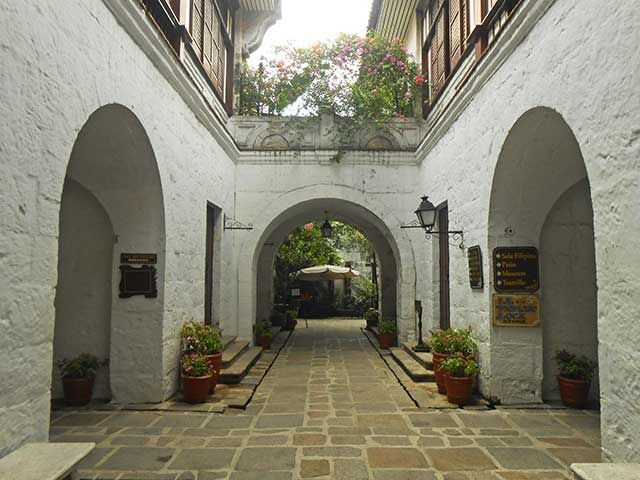
As it used to be home to the elite at the time It’s not a surprise that there are numerous public squares in Intramuros that people can use to spend their time in leisure. Since then, Plaza de Roma has been one of the town squares. Plaza de Roma, located right across Manila Cathedral, was the principal public square in Intramuros. It was the site of many gatherings and celebrations before it was turned into an outdoor garden by the Governor-General in the late 17th century.
Plaza San Luis took its name from one of the old barrios of Intramuros. It’s now an urban and cultural complex that includes museums, restaurants and a venue for events. Plaza San Luis is located close to San Agustin Church.
4. Visit a museum
A trip to an art museum is a good idea if you love admiring antiques and other historical artifacts. If you are in Intramuros you are essential to know the most about the rich past of the city’s walled walls, but also about Manila as a whole. There is nothing better to learn than these Intramuros museums.
- San Agustin Church Museum
- Rizal Shrine Museum
- Rizaliana Furniture Exhibit
Bahay Tsinoy
- Archdiocesan Museum of Manila
Light and Sound Museum
- Fr. George J. Willmann, SJ Museum
- The Bonsai Library and Museum
- The Silahis Center
- Baluarte de San Diego
- Likha-an sa Intramuros
- Destileria Limtuaco Museum
- iMake History Fortress LEGO Education Center
- Instituto Cervantes de Manila
- Museo de Intramuros
- The Attic Museum
- Colegio de San Juan de Letran
San Agustin Museum

The museum houses an assortment of Spanish colonial-era ecclesiastical clothes as well as manuscripts, sacred vessels as well as ivory and wooden statues, Dominican paintings and sculptures and a variety of other sacred objects.

In this interactive museum visitors can explore Philippine history during the Spanish rule and the lifestyle of Rizal by way of images, sounds and animatronics.
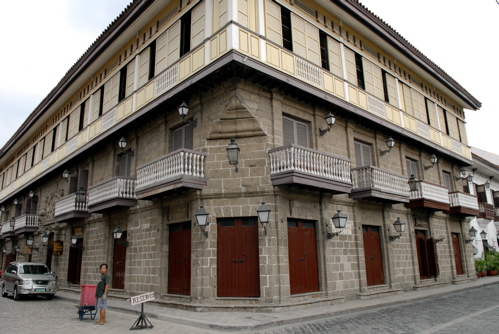
In this site, you can discover the past and achievements of China-Filipino communities, which includes those who supported the Filipinos’ revolution against Spaniards.
It also houses galleries as well, such as Batang Tiaong, Bahay na Bato (Chinese settlement in Manila), Ching Ban Lee Ceramics Gallery, Martyrs Hall along with Batang Tiaong.
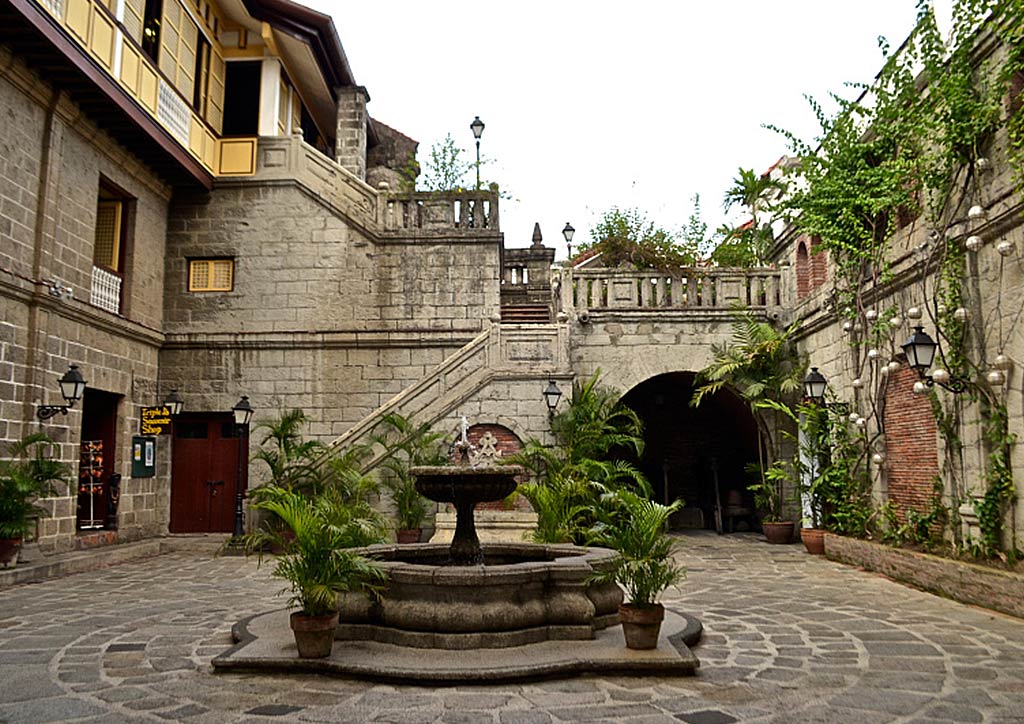
The location can be described as a recreation of residence of a wealthy family from the 18th century or the Ilustrados.
These are the educated and wealthy classes that held immense influence in both the state and among the people. The homes are full of furniture, art and other objects that date back to the colonial age.

In Intramuros eating out is about the ambience and overall experience, not the diversity and variety of food options. There’s nothing really unique about eating in a restaurant, but when you’re in Intramuros located in the midst of historical buildings, the dining experience gets a new level. The majority of restaurants located in Intramuros provide Filipino cuisine , so if that is what you want, then make your way to the city that is walled.
There are some restaurants that serve international cuisines (after all, Manila is a melting pot of different kinds of cultures) which foreigners may be familiar with but the best method to take pleasure in your Intramuros food tour is to stick to local favorites that serve traditional Filipino food and a cultural experience.

The most well-known thing to do in Intramuros is exploring Intramuros on bicycles. These aren’t your typical bicycles, they are eco-friendly , sustainable, and bamboo bicycles that are made by hand. If you’d like to experience this, you must look into Bambike’s website. The price for this tour is P1,747.98.
Where can you stay
The space within Intramuros is small, it is only sensible to have only a handful of accommodation options available to people who wish to stay inside these walls during the duration of their stay. Some are quite expensive. But, there are plenty of alternatives beyond the walls.

There’s a lot of activity taking place within Intramuros, Manila, or almost any city or district within the Metro. But, the capital city doesn’t let tourism down and, therefore, whatever type of traveler you’re: someone who backpacks with money in the bag or an experienced traveler who’s had saved for a week of adventure, there’s going to be a perfect accommodation option both inside and out of Intramuros.
Budget and luxury Hotels of all kinds are found in Manila. In actuality, Manila Hotel, one of the most well-known brands in luxury hotels, is within Intramuros. But, as one of the most popular tourist destinations in the Philippines, Manila caters to penny-pinchers and budget-conscious travelers too.
Apartment and Condominium Units for Rent
Rental properties around Intramuros are usually available on Airbnb. There are many apartments and condominiums in Manila mostly due to the recent growth of the real estate sector. A lot of these rooms can be rented out for various reasons, which makes it a reasonable option for accommodation for tourists.
What to Pack
Other than your basic necessities (i.e. passport, ID cards, cash and other ID cards. ) In addition, you might need your smartphone along with pocket Wi-Fi (or purchase local SIM to use data) to help you navigate if you need to. Unfortunately there aren’t all public spaces in the Philippines offer free Wi-Fi, so it’s best to have your own.
As we’ve mentioned before, pack lightweight clothing and shoes that are comfortable for walking. If you’re anticipating rain, make sure you have an umbrella, raincoat or jacket to safeguard yourself. If it’s going to be warm, a new set of clothing, towels as well as plenty of water are essential.
Things to Remember
- Intramuros is a public space therefore there is no entrance cost for visitors who would like to go there.
- Intramuros is the best place to explore during the dry time that runs from January to May.
- Dress in comfortable shoes and clothes while walking through Intramuros. If you’re traveling on your own and you are traveling on your own, it might be beneficial to carry an extra selfie stick to capture memorable images as you wander around Intramuros.
- You can take as many photographs as you like of the iconic landmarks of Intramuros.
- Intramuros is usually a secure location, particularly since there are security guards in numerous corners and structures. But, be cautious and ensure your possessions are secured, especially in case you’re exploring unfamiliar territory.
- Intramuros is easily accessible by vehicle.
- Always seek permission before you want to visit a structure or square.
- There are a lot of dark places in Intramuros and it is scary in certain places. Actually, some of the most frightening locations in Manila are located in Intramuros.
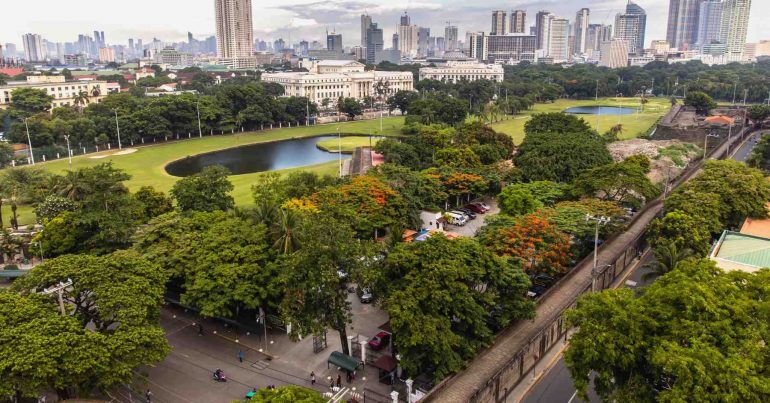
At present, upgrades and enhancements are being carried out to preserve the appearance and timeless appeal of Intramuros. It’s always good to visit again and discover the latest developments if you’re looking for.
Intramuros is an ongoing reminder to Filipinos to remember that beauty exists even in the chaos. Maybe not necessarily in terms of appearance however, the fact that they are able to endure the harsh realities of time and the past and improve from them is still something to be celebrated.
It is an extremely secure city, protected by fortifications, however its rich past must be displayed at the forefront for the world to experience. This is the reason Intramuros is one of the most well-known destinations on Manila tours.
Take a trip back in time to discover for yourself the things that make Intramuros an exceptional destination. Intramuros tours , activities and excursions are available throughout the year for you to experience.
- intramuros , intramuros tourist spots , philippines , philippines tourist destination , philippines tourist spots , tourist spots
Leave a Comment Cancel reply
Save my name, email, and website in this browser for the next time I comment.
Intramuros: History of Old Manila | Manila Walking Tours

- Bottled water
- English-speaking local tour guide
- Entry/Admission - Fort Santiago
- Entry/Admission - Rizal Shrine
- Entry/Admission - Casa Manila
- Tips and gratuities
- Hotel pick-up and drop-off
- Horse carriage ride
- Fort Santiago, HXVC+M5V, Intramuros, Manila, 1002 Metro Manila, Philippines Enter through the Fort Santiago entrance booth and look for your tour guide who is wearing a "'Don't Skip Manila" t-shirt or sign.
- Casa Manila, HXQG+V52 plaza sans luis complex, General Luna St, Intramuros, Manila, 1002 Metro Manila, Philippines Tour will end 5 blocks away from the starting point.
- Not wheelchair accessible
- Stroller accessible
- Near public transportation
- Infants must sit on laps
- Confirmation will be received at time of booking
- This walking tour includes a moderate amount of walking. it is advised to wear comfortable clothing in a tropical climate.
- Guests are advised to dress casual. A dress code is required to enter places of worship and selected museums. No mini-shorts or sleeveless tops allowed. You may risk refused entry if you fail to comply with these dress requirements.
- Children must be accompanied by an adult. Child rate applies only when sharing with 2 paying adults.
- Most travelers can participate
- This experience requires good weather. If it’s canceled due to poor weather, you’ll be offered a different date or a full refund
- This experience requires a minimum number of travelers. If it’s canceled because the minimum isn’t met, you’ll be offered a different date/experience or a full refund
- This tour/activity will have a maximum of 20 travelers
- For a full refund, cancel at least 24 hours in advance of the start date of the experience.
- Casa Manila
- Fort Santiago
- Rizal Shrine
- Manila Cathedral
Similar experiences

- You'll start at Fort Santiago HXVC+M5V, Intramuros, Manila, 1002 Metro Manila, Philippines Enter through the Fort Santiago entrance booth and look for your tour guide who is wearing a "'Don't Skip Manila" t-shirt or sign. See address & details
- 1 Fort Santiago Stop: 60 minutes - Admission included See details
- 2 Rizal Shrine Stop: 30 minutes - Admission included See details
- 3 Manila Cathedral Stop: 20 minutes See details Pass by Intramuros
- 4 Memorare Manila Monument Stop: 20 minutes See details
- 5 Casa Manila Stop: 45 minutes - Admission included See details
- You'll end at Casa Manila HXQG+V52 plaza sans luis complex, General Luna St, Intramuros, Manila, 1002 Metro Manila, Philippines Tour will end 5 blocks away from the starting point. See address & details

- 299marielt 0 contributions 5.0 of 5 bubbles Don't Skip Manila. Understand what it truly means to be a Filipino. We had a very informative and inspiring tour. There were other tour guides with their respective groups there but I felt that what differentiates Don't Skip Manila from the rest is their love for Manila. They explained the richness of our heritage with passion and deep appreciation of our history. You did a remarkable job! Read more Written May 15, 2024
- 759enac 0 contributions 5.0 of 5 bubbles Don’t skip this tour! So informative and such a great personal touch from Andrei! My family is from Manila but we got to learn so much more about the city’s history. It was better to do this tour than just walk around Fort Santiago and Intramuros on your own. We had so much context and personal flair that it really helped us have a better experience and better understanding of these places. We also rode a Tranvia and got some dirty ice cream (which every person visiting Manila has to try at least once) This tour really was the best, we really got to have a taste of old Manila. It was greatly organized and Andrei has a great personality and he speaks so passionately about Manila, you’ll fall in love it with even more. You really shouldn’t skip this tour! Read more Written April 22, 2024
- Angelson John Q 0 contributions 5.0 of 5 bubbles Experiencing Fine Arts We had a great time exploring the amazing artifacts, arts and sculpture that shaped the Filipino society we know and love from legendary artists like Juan Luna who inspired the Filipino people to fight for independence to modern artists that express the society of today truly a remarkable visit and an even amazing collection. A highly recommend to family, friends and couples out there. Read more Written April 13, 2024
- LuckyGrandmaMP 0 contributions 5.0 of 5 bubbles Intramuros Old Manila fun walking tour. Intramuros: History of Old Manila | Manila Walking Tours was so much fun, with 8 other family members and learned a lot about the area from our guide that we did not know from prior trip walking around ourselves. We had one member on crutches and they were very accommodating and patient. So much rich history was learned. Read more Written April 5, 2024
- 889ellem 0 contributions 5.0 of 5 bubbles Awesome Tour with Andre! Awesome Andre and Don't Skip Manila. I had done the Intramuros tour many times before with Carlos Celdran, bringing friends and family. I miss him, a true-blue cultural activist and performance artist who made you love this country, warts and all through a tour!!!! So was so glad to find Andre who I find out Carlos was trying to partner with at the latter time of his life. Andre is just as passionate and knowledgeable, in fact I learned so many new things and my whole team appreciated the lightness tho very substantial sharing . Andre was also willing to customize it for our group, given that my niece was marrying her Chinese-American boyfriendso I got to do Binondo Chinatown museum , and Binondo wok- this Chinatown which is the oldest and biggest in the world, dubbed Wall st. of the East prior to the Fil-American war. And segued to a night tour of Intramuros and Fort Bonifacio, a place close to my heart as I did theater there for 10 years in my youth- and now I saw it again, with new eyes, new information, the waiting room of actors now with a statue of Rizal because here it was that he waited for 24 hours prior to execution...And the dungeon! It seemed just right that our last stop was San Agustin, the only church that wasn't destroyed then, despite the gruesome war. It was International day for tour guides, says Andre and he made the day really special, not an ordinary day at work. Thank you Andre!!!Awesome Tour Read more Written March 4, 2024
- WTravelerSeattle 0 contributions 5.0 of 5 bubbles Don’t miss this tour! I’ve reviewed over 100 hotels and decided to do my very first ‘guided tour’ review due to what I experienced to be a MUST DO when visiting Manila, especially if it’s your first time in the city. Don’t Skip Manila tour takes you on a historical and educational ride from the early Spanish Colonial time which lasted hundreds of years, to the more recent American and Japanese occupation period. The tour’s entire focus is the historical ewalled city of Intramuros. Andrew is a great story teller, weaving historical events, places, and heroes like he was telling a bedtime story. His story is captivating from the start and sometimes intense, but very easy to follow. I actually grew up there and learned things I myself never knew like the origin of the city name and the national language. Riding the ‘trambia’ around the entire walled city while he points out all important landmarks is a fabulous addition, especially due to the heat. Ordering the local ice cream like locals is a nice touch. If you are looking for a tour to go to or to tell your friends about, look no further! Book early because it does fill up quickly due to word getting out. Read more Written March 3, 2024
- JoAnNnaanNnAoJ 0 contributions 5.0 of 5 bubbles Don’t skip Manila and do this tour ! Andre is a really nice and patient guide. Very knowledgeable about his country’s history. Nice tour to learn about the different occupations and the war while visiting major landmarks of the city. He answers all the questions we had about his country and the city. We can feel that he appreciates Manila and he makes you like/respect it too. As they say, DON’T SKIP MANILA (when coming to the Philippines) Read more Written January 20, 2024
- Lei231 0 contributions 5.0 of 5 bubbles Wonderful, informative, enjoyable Excellent, do it! Andrei is deeply knowledgeable about the rich history of the Philippines. He does it justice within just hours of retelling hundreds of years of history mixed with humor which makes it enjoyable. He’s a real historian that appreciates the past and shares that passion with his guests. It was easy to arrange the tour, I booked it a couple of months before we flew to Manila from Seattle. Andrei is very responsive thru email. I was with family members who were visiting for the first time in the Philippines. Everyone loved the tour including hubby who’s a history buff. Highly recommend, it’s worth it! Read more Written January 9, 2024
- ScottM130 0 contributions 5.0 of 5 bubbles A must in Manila This 4hr tour (part walking) gave an informative and fascinating insight to the colonial history of the Philippines. Read more Written October 5, 2023
- Greenbelle 0 contributions 5.0 of 5 bubbles Must see museum- just amazing The collections and artwork was just amazing. When I saw these things as a kid, I admit, I didn’t appreciate it as much. But now as an adult, it makes me proud of the artist in the Philippines. For my daughter and her friend, they had a great exposure to the history, talent, and stories of the country. We were there for over four hours. I just wish there was a cafe and gift shop so we didn’t have to go out of the museum. Loved the pieces. Some art work needs some restoration and better lighting but the work and care put into the exhibit was amazing. Read more Written August 30, 2023
- Ann B 0 contributions 5.0 of 5 bubbles Must do tour Andrejie was a great guide. Very informative with a keen n sense of humour. Thoroughly recommended. As a solo traveller he made sure I was included in everything and took great care with my transport. Read more Written August 21, 2023
- christopherhT3401ZN 0 contributions 5.0 of 5 bubbles A great way to discover Manila Our guide, Andrei, is a history professor at the local university. He was very informative and had a great sense of humor. He created a great 1/2 day tour! Read more Written March 29, 2023
- Mya J 0 contributions 5.0 of 5 bubbles Ask for Andrei! Andrei was an attentive and very knowledgeable guide. He was patient, informative and full of interesting stories! 10/10 I would recommend this tour to my friends. There was refreshments and ice cream included in the tour. Read more Written March 19, 2023
- S4597UYpaulf 0 contributions 5.0 of 5 bubbles Intramuros your a MUST! Wow what a fantastic and informative tour. Our tour guide Andrei was awesome and the tour even included water and street ice cream. Intramuros is fascinating for all parts of its history, this tour is a MUST. Read more Written March 19, 2023
- JosephineMarie 0 contributions 5.0 of 5 bubbles A perfect kickoff to our Philippines holiday A wonderful tour! Andre is friendly, knowledgeable and engaging and in the few short hours we had we learnt a fascinating summary of Manila’s history, covering the last 400 years and walking through some of the most beautiful spots in the city. The pace was perfect and he had carefully thought out spots to stop and present where shade and seating were available for a hot day, and the option along the way to enjoy chilled water or a delicious avocado ice cream. Definitely worth booking if you would like to have a better understanding of the local culture and history before continuing your holiday. Read more Written March 7, 2023
More to explore in Luzon

Most Recent: Reviews ordered by most recent publish date in descending order.
Detailed Reviews: Reviews ordered by recency and descriptiveness of user-identified themes such as wait time, length of visit, general tips, and location information.
Buy it with

Intramuros: History of Old Manila | Manila Walking Tours provided by Don't Skip Manila City Tours

Local heritage tourism is back in full swing with these Manila walking tours

- These walking tours let you see—and sometimes taste—Manila’s incredible history and culture. All while getting some exercise in
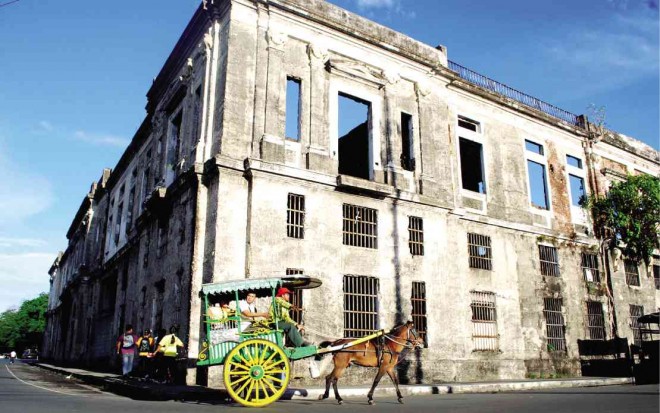
Walkable cities are still a thing of the future, but that doesn’t mean you can’t enjoy Manila on foot. Manila is one of the oldest cities in the country, which means there are several sites and landmarks that deserve our attention.
View this post on Instagram A post shared by nolisoli.ph (@nolisoli.ph)
Founded by Spanish invaders in 1591, Manila has seen some of the most brutal and beautiful events in our nation’s history. While most tourists favor more tropical destinations, Manila still offers some of the richest experiences when it comes to our cultural heritage and history.
If you ever want to play tourist for a day and discover the historical side of the capital, here are some walking tour companies that offer experiences worth your while.
WanderManila
Wander Manila is a walking company that specializes in private and customized tours in the historical Intramuros district. They currently have three curated tours: ¡Hola Intramuros!, One Night in Intramuros, and the Chinoy Heritage Tour.
View this post on Instagram A post shared by WanderManila (@wander.manila)
The Hola Intramuros tour takes you around the Intramuros area during the daytime. The One Night in Intramuros tour is during the evening and shows you the darker side of the area’s history. The Chinoy Heritage Tour takes place across the Binondo, San Nicolas, and Escolta areas—which are some of the places that have a high concentration of Chinese immigrants.
These tours come with your very own tour guide and costs P1,000 per head with a minimum of 3 guests per tour.
WanderManila also has custom tours available where you can pick your destinations. These custom tours start at P1,500 per head with a minimum of three guests per tour. The final cost can be higher depending on the inclusions.
You can book your tours through the WanderManila Facebook page
Walking Tour – Lakbay Lakaran sa Quiapo
Lakbay Lakaran sa Quiapo takes you on a firsthand adventure through what is considered to be “old downtown Manila.” The tour incorporates a sightseeing journey, a pilgrimage, and a fiesta all into one experience. Having started some time in the late ’80s, Lakbay Lakaran sa Quiapo is also thought to be one of the oldest walking tours.

Each tour takes you across the Quiapo district and its historical landmarks, like the San Sebastian Church and Bahay Nakpil-Bautista.
The tour costs P700 per person, with a minimum of three people in each group. It starts at 1:30 p.m. and runs for 3 to 4 hours, depending on the group’s pace.
You can book your tours through the Walking Tour – Lakbay Lakaran sa Quiapo Facebook page
Old Manila Walks
Old Manila Walks is one of the biggest walking tour companies that operate in the city. It offers five different tours: Intramuros (P1,500+), Binondo (P1,750+), San Miguel and Malacañang Palace (P1,750), Chinese Cemetery (P1,300), and a halo-halo tour combo you can customize (P2,850).
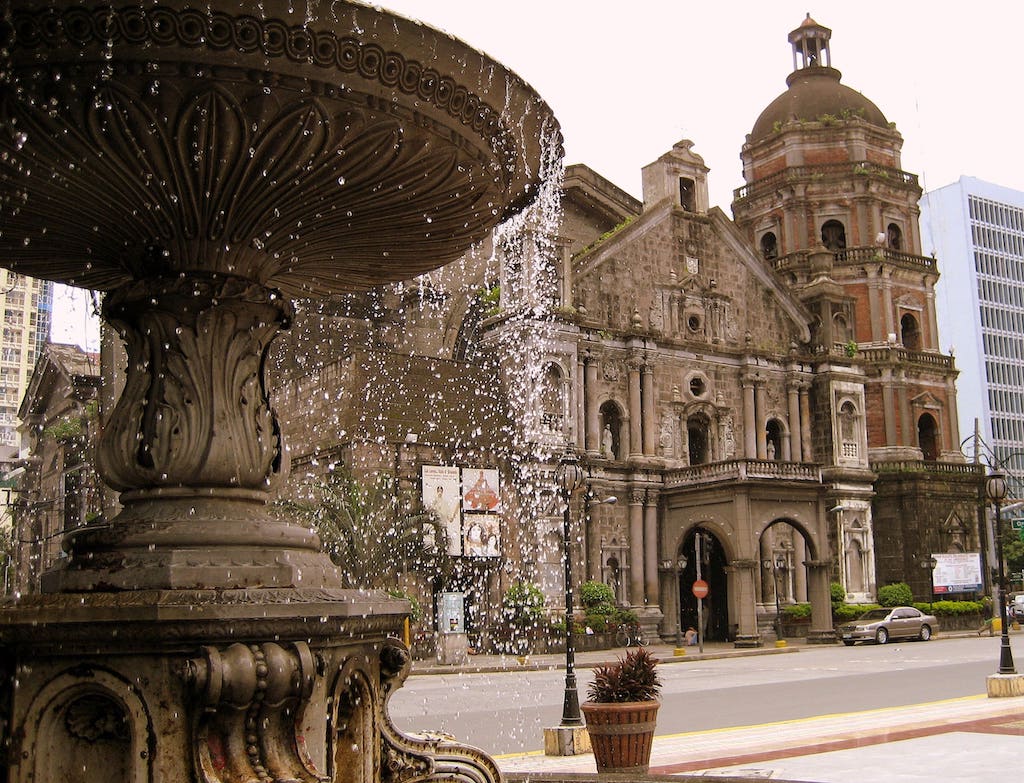
The rates go up by P150 to P300 on weekends, except for the San Miguel and Malacañang tour, which is only available on weekdays. The Binondo tour is also a food tour with a tasting menu, which is already covered by the initial payment. The Intramuros tour can also be extended or done at night, which costs P1,800.
The mix-and-match tour allows you to combine two walking tours in one. The combos available are Intramuros with either the Chinese Cemetery, Malacañang, or Rizal Park.
There are scheduled tours you can book through the website , but if you don’t see the tour or dates you want, you can schedule it through their booking form .
Bambike Eco Tours
This tour is especially crafted for bike enthusiasts who also want to get a little history and culture in, along with some exercise. Though not strictly a “walking” tour, the Bambike Eco Tour still allows you to explore Manila with your own two feet—albeit on a bike.
View this post on Instagram A post shared by Bike Tours in Intramuros (@bambikeecotours)
Bambikes offers three types of guided tours around Intramuros: the Intramuros Experience (P1,699 per person), the Intramuros Express Tour (P999 per person), and the Intramuros Sunset Tour (P1,799 per person).
The Intramuros Experience takes you through eight different sites in two and a half hours, while the express version takes you to six different sites in an hour and a half. The sunset tour is a two-hour tour that happens in the late afternoon and ends with a complimentary drink at The Bayleaf Intramuros—just in time to see the gorgeous Manila Bay sunset.
All the tours come with your very own choice of Bambike, a serving of local ice cream (a.k.a. dirty ice cream), and a cool towel to freshen you up after your journey.
For people who want to take the tour but don’t know how to ride a bike, don’t worry. Bambikes also offers bikes with sidecars and a trained operator for P600 for a regular bike and sidecar, or P1,000 for a bamboo bike and sidecar. Both options are big enough to fit two people.
You can book your tours through the Bambike website

4 bars and restaurants that deserve a happy hour visit
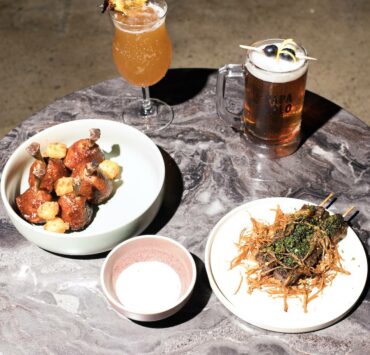
What goes well with craft beer? Discover it yourself at this Tagaytay brewery and restaurant
In defense of touristy spots—as a proud tourist.
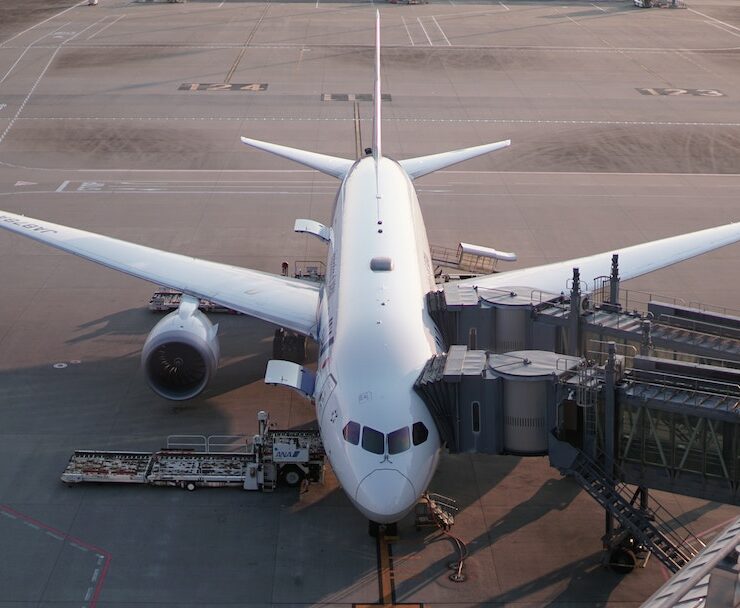
This is why your flights have been *extra* delayed or canceled
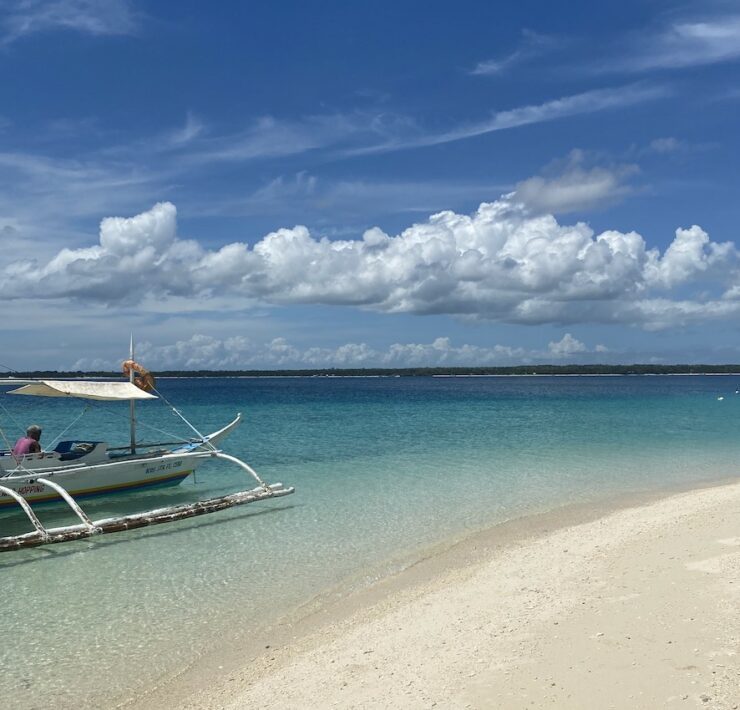
A Bantayan Island itinerary for those who are short on time
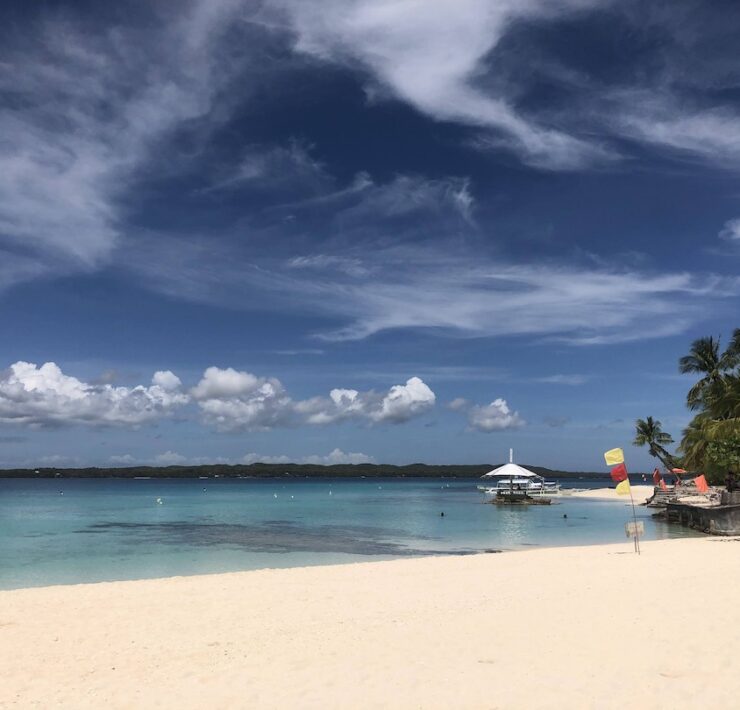
Local summer destinations that *aren’t* Boracay, Siargao, or Palawan
- INQUIRER.NET
Nolisoli.ph © 2020. Hinge Inquirer Publications, Inc.
FAQS ✻ SUBMISSION GUIDELINES ✻ LINK POLICY
akun Slot88 slot jackpot terbesar situs slot88 terpercaya Slot Paling Gacor Hari Ini slot pulsa Slot Terbaru Gampang Menang
mytourguide.ph
Explore Intramuros: The Heart of Old Manila’s Rich History
Intramuros is the ancient heart of Manila , a walled city that showcases the rich history and Spanish architecture of Old Manila . Built by the Spaniards as their political and military base in Asia, this historical gem has become one of the Philippines’ most popular tourist spots.
Surrounded by 22-foot-high walls , Intramuros is easily navigable on foot or by bike. As you explore the city, you’ll encounter a myriad of historical sites that offer a glimpse into the Spanish colonial era . From imposing stone walls and forts to stunning churches and museums , the attractions within Intramuros provide a fascinating journey through time.
Notable landmarks include Fort Santiago , where national hero Jose Rizal was executed, and the magnificent Manila Cathedral with its breathtaking stained-glass windows . San Agustin Church , dating back to 1607 , stands as a testament to the Spanish period , while Casa Manila offers a glimpse into the opulent lifestyle of the Spanish elite.
To enhance your Intramuros experience, you can choose to explore the city with a horse-drawn cart or an E-Trike . These unique modes of transportation allow you to immerse yourself in the rich history and architectural beauty of this captivating destination.
The best time to visit Intramuros is during the dry season from December to May when the weather is pleasant and the crowds are less intense. However, the cooler temperatures and lighter traffic during the cool dry season (December-February) can also make for an enjoyable visit. The rainy season from June to November should be approached with caution, as it may bring heavy rainfall. Remember to dress accordingly and carry an umbrella if visiting during this time.
Accessibility to Intramuros is convenient, with various modes of transportation available. Land transportation options include taxi cabs , car booking apps , as well as the LRT and MRT train lines. Buses are also popular for traveling to Intramuros.
During your visit, don’t miss the opportunity to savor local cuisine and dine at recommended restaurants and bars within Intramuros. Indulge in the flavors of the Philippines while immersing yourself in the historical ambiance of the walled city.
Important practical information and tips include understanding the local currency , being aware of the language spoken, prioritizing safety , and utilizing public transportation for a seamless experience.
Overall, a trip to Intramuros promises an unforgettable exploration of Manila’s rich history and heritage . Step back in time and discover the beauty of this historical gem.
Key Takeaways:
- Intramuros is an ancient walled city in Manila that showcases rich history and Spanish architecture .
- Explore Intramuros on foot or by bike to fully appreciate its charm.
- Visit historical sites like Fort Santiago , Manila Cathedral , San Agustin Church , and Casa Manila .
- Experience a unique journey through Intramuros with a horse-drawn cart or E-Trike .
- Consider the weather when planning your visit, with the dry season from December to May as the best time to go.
- Various modes of transportation make getting to and around Intramuros convenient.
- Indulge in local cuisine and dine at recommended restaurants and bars within the walled city.
- Prepare with practical information and tips to ensure a smooth and enjoyable visit.
Discovering the Spanish Colonial Era in Intramuros
Step back in time and explore Intramuros’ fascinating Spanish colonial heritage through its stone walls , forts , churches , and museums . This historical walled city, built by the Spaniards as their political and military base in Asia, offers a glimpse into a bygone era that shaped the history of the Philippines . Intramuros is home to various sites that highlight the architectural beauty and cultural significance of the Spanish colonial period.
One of the notable attractions within Intramuros is Fort Santiago . This fortress, located on the banks of the Pasig River, served as a defense stronghold during the Spanish colonial era . Today, it stands as a historical landmark where national hero Jose Rizal was imprisoned before his execution . Explore the fort’s well-preserved walls, moat, and dungeons, and discover the stories of courage and resilience that unfold within its surroundings.
As you continue your journey through Intramuros, you’ll encounter magnificent churches that showcase the religious devotion and artistic excellence of the Spanish period . The Manila Cathedral , also known as the Minor Basilica of the Immaculate Conception, is a marvel of architecture with its intricate stained-glass windows and towering spires. Step inside and admire the grandeur of this iconic religious landmark.
Aside from churches, Intramuros is also home to museums that preserve and showcase the rich history and culture of the Philippines . The San Agustin Museum, located within San Agustin Church, houses a collection of religious artifacts, artwork, and historical relics. The Casa Manila Museum, situated adjacent to San Agustin Church, offers a detailed representation of a 19th-century Spanish colonial home, complete with period furniture and decorations.

Explore Intramuros’ Spanish Colonial Era
- Fort Santiago – Visit this historical fortress that served as a defense stronghold during the Spanish colonial era. Explore its well-preserved walls, moat, and dungeons.
- Manila Cathedral – Admire the stunning stained-glass windows and grand architecture of this iconic religious landmark.
- San Agustin Church – Step inside this UNESCO World Heritage Site that dates back to 1607 and marvel at its architectural beauty.
- Casa Manila – Immerse yourself in the opulence of the past as you explore this reconstructed home that showcases the lifestyle of the wealthy during the Spanish colonial era.
- San Agustin Museum – Discover religious artifacts, artwork, and historical relics housed within this museum located within San Agustin Church.
- Casa Manila Museum – Take a step back in time as you explore this museum that offers a detailed representation of a 19th-century Spanish colonial home.
“Intramuros is a treasure trove of historical sites that reflect the grandeur and significance of the Spanish colonial era in the Philippines .”
Exploring Intramuros on Foot or by Bike
Intramuros is a pedestrian-friendly city, with its 22-foot-high walls making it easy to explore on foot or by bike. Whether you prefer to stroll at a leisurely pace or pedal your way through the cobblestone streets, this historic walled city offers a unique experience that allows you to immerse yourself in its rich history and Spanish architecture .
Exploring Intramuros on foot allows you to fully appreciate its charm and beauty. As you wander through the narrow streets, you’ll encounter stunning colonial buildings, ancient stone walls , and well-preserved forts that stand as silent witnesses to the city’s past. The walkability of Intramuros enables you to discover hidden gems at your own pace, such as picturesque courtyards, quaint cafes, and beautifully adorned churches. Don’t forget to bring your camera along to capture the intricate details of the Spanish-influenced architecture that adorns the city.
If you prefer a more active adventure, exploring Intramuros by bike is a fantastic way to cover more ground while enjoying the sights and sounds of this historical gem. You can rent a bike from one of the rental shops nearby or bring your own. As you pedal along the streets, you’ll have the freedom to stop at various landmarks and attractions, making it easier to navigate through the narrow alleys and reach sites that are further apart. Cycling through Intramuros allows you to experience the city from a different perspective, giving you a sense of freedom as you soak in its history and atmosphere.
Exploring Intramuros on Foot or by Bike: Tips and Recommendations
Whether you choose to explore Intramuros on foot or by bike, the experience will undoubtedly transport you back in time. Each step or pedal stroke will reveal a piece of history, and you’ll gain a deeper understanding and appreciation for this captivating city. So, put on your walking shoes or hop on a bike, and let the charming streets of Intramuros lead you on a journey through Manila’s rich past.
Fort Santiago: A Historical Landmark
Explore the iconic Fort Santiago, the hallowed ground where national hero Jose Rizal met his tragic fate. This historical landmark within Intramuros holds immense significance in the story of the Philippines . The fort, originally built as a defense fortress by the Spanish conquistadors, became the site of Rizal’s imprisonment and execution during the Philippine Revolution in 1896.
Step inside the imposing stone walls of Fort Santiago and immerse yourself in its rich history. Discover the Rizal Shrine, a museum dedicated to the life and achievements of Jose Rizal, displaying his writings, personal belongings, and memorabilia. The museum offers a poignant insight into Rizal’s role in advocating for Philippine independence.
“I consider myself happy for being able to suffer a little for a cause which I believe to be sacred and just,” – Dr. Jose Rizal
As you explore the fort, you’ll encounter well-preserved buildings, lush gardens, and a tranquil courtyard. Take a leisurely stroll along the walls and enjoy panoramic views of the Pasig River and the city skyline. The fort’s architectural beauty, combined with its historical significance, creates a captivating experience for visitors.
Manila Cathedral: A Marvel of Stained-Glass Windows
Marvel at the intricate beauty of Manila Cathedral, a grand structure adorned with mesmerizing stained-glass windows. This iconic cathedral, also known as the Manila Metropolitan Cathedral-Basilica, is the premier seat of the Roman Catholic Archdiocese of Manila . Located within the historic walls of Intramuros, it stands as a testament to the city’s rich religious heritage and architectural splendor.
The Manila Cathedral’s stunning stained-glass windows are a sight to behold. These exquisite works of art depict various religious scenes and symbols, bringing an ethereal glow to the cathedral’s interior. The vibrant colors and intricate details of the stained glass create a truly mesmerizing experience for visitors. As sunlight filters through the windows, it casts a kaleidoscope of colors, bathing the cathedral in a heavenly ambiance.
The cathedral itself is a remarkable architectural marvel. Its neo-Romanesque facade, adorned with intricate carvings and statues, stands as a testament to the merging of Spanish and Filipino artistry. Step inside, and you’ll be greeted by a soaring nave, elegantly adorned with high ceilings, chandeliers, and ornate altars. The Manila Cathedral’s beauty lies not only in its physical grandeur but also in its historical significance as a place of worship and sanctuary.
“The Manila Cathedral’s stunning stained-glass windows are a sight to behold.”
A visit to Manila Cathedral offers not only a glimpse of its architectural grandeur but also an opportunity to immerse yourself in the rich religious history and cultural heritage of the Philippines . Whether you’re a devout Catholic or simply an appreciator of art and history, the Manila Cathedral is a must-see destination in Intramuros.
San Agustin Church: A Testament to History
Delve into history at San Agustin Church, a magnificent testament to the Spanish period in Intramuros. This iconic church, established in 1607, stands as one of the oldest stone-built churches in the Philippines . Its architectural beauty, coupled with its rich historical significance, makes it a must-visit destination for both locals and tourists.
Step inside the grand doors of San Agustin Church, and you’ll be greeted by stunningly ornate interiors adorned with intricate carvings and exquisite paintings. The majestic nave, flanked by impressive pillars, leads to the main altar, which showcases a stunning crucifix dating back to the 16th century. The church’s Baroque-style architecture, characterized by its ornate details and elaborate designs, is a testament to the Spanish colonial influence.
As you explore the church, you’ll come across various chapels that house priceless works of art and religious artifacts. Don’t miss the chance to visit the San Agustin Museum, located within the church grounds, which holds a remarkable collection of religious artifacts, colonial-era paintings, and centuries-old manuscripts.
A visit to San Agustin Church provides a captivating glimpse into the Philippines’ colonial past and the enduring influence of Spanish architecture and culture in Intramuros. Whether you’re a history enthusiast or simply looking to appreciate remarkable architectural beauty, this historical gem is a must-see destination during your exploration of Intramuros.
Casa Manila: A Glimpse of Spanish Colonial Lifestyle
Step into the past at Casa Manila , a meticulously restored home that offers a glimpse into the opulent lifestyle of the wealthy during the Spanish colonial period. Located within Intramuros, this iconic attraction showcases the architectural beauty and grandeur of a bygone era. With its exquisite details and period furnishings, Casa Manila brings to life the elegance and sophistication of Spanish colonial living.
As you step through the doors of Casa Manila , you’ll be transported back in time to the 19th century. This reconstructed home is a testament to the opulence enjoyed by wealthy families during the Spanish period. Every room is meticulously decorated in period style, reflecting the rich heritage and cultural influences of the era. From the intricately carved wooden furniture to the delicate chandeliers and exquisite artwork, Casa Manila offers a true feast for the senses.
Take a leisurely stroll through the different rooms and marvel at the craftsmanship and attention to detail. Admire the beautifully manicured gardens and courtyards, complete with ornate fountains and lush greenery. Casa Manila also hosts regular cultural events and exhibits, providing visitors with a deeper understanding of the history and customs of the Spanish colonial period.
Visiting Casa Manila is a truly immersive experience that allows you to step back in time and appreciate the grandeur of Spanish colonial life. Whether you’re a history enthusiast or simply looking to soak up the ambiance of a bygone era, Casa Manila is a must-visit destination within Intramuros.
Exploring Intramuros with a Horse-Drawn Cart or E-Trike
Enhance your Intramuros experience by traversing the historic streets in a romantic horse-drawn cart or a modern E-Trike . These unique modes of transportation offer a charming and convenient way to explore the old colonial walled city of Manila . Whether you prefer the nostalgia of a horse-drawn cart or the eco-friendly convenience of an E-Trike, both options provide a memorable journey through Intramuros’ rich history and Spanish architecture.
Choose Your Adventure
When deciding between a horse-drawn cart and an E-Trike, consider your preferences and the experience you want to have. The horse-drawn cart offers a romantic ambiance and a slower pace, allowing you to soak in the sights and sounds of Intramuros. On the other hand, the E-Trike provides a more modern and efficient way to explore, ideal for those seeking convenience and flexibility.
“Riding in a horse-drawn cart truly transports you to another era, evoking a sense of nostalgia and wonder.” – Travel enthusiast
Both options offer guided tours with knowledgeable drivers who can share interesting facts and stories about the city’s history. They can also provide recommendations on the must-visit attractions and hidden gems within Intramuros.
Plan Your Intramuros Adventure
When planning your exploration of Intramuros, consider booking your horse-drawn cart or E-Trike tour in advance to secure your preferred time slot. Prices may vary, so it’s advisable to check with reputable tour operators for the best rates and options. Keep in mind that capacity may be limited, especially during peak tourist seasons, so early booking is recommended.
Whether you choose a horse-drawn cart or an E-Trike, both modes of transportation offer an enchanting and convenient way to soak in the rich history and heritage of Intramuros. Embark on a journey through time as you explore the stone walls, forts, churches, and museums that showcase the Spanish colonial era. Prepare to be captivated by the charm and beauty of this historic gem.
Best Time to Visit Intramuros
Plan your visit to Intramuros wisely, considering the pros and cons of the dry and rainy seasons. Intramuros is a historical gem in Manila that offers a glimpse into the city’s rich history and Spanish influences. The best time to explore this captivating destination is during the dry season, which runs from December to May. However, the months of September to December also provide cooler temperatures, making it a pleasant time to visit Intramuros, although it may come with heavier traffic due to the holiday season.
During the dry season, Intramuros experiences less rainfall, allowing visitors to enjoy the city’s outdoor attractions and explore its historical sites without interruption. The cool dry season, which spans from December to February, offers milder temperatures, making it a comfortable time to stroll through the city’s cobbled streets. The hot dry season from March to May brings warmer weather, so it’s important to stay hydrated and wear sunscreen during this period.
On the other hand, the rainy season in Intramuros lasts from June to November, with increased rainfall and occasional typhoons. While the rain may dampen outdoor activities, it can also lend a certain charm to the city, as its Spanish architecture glistens in the rain. Visitors during the rainy season should come prepared with an umbrella or raincoat to stay dry while exploring the historical sites.
Ultimately, the choice of when to visit Intramuros depends on personal preferences and priorities. Whether you prefer to explore under clear skies during the dry season or experience the allure of the rain-soaked city during the rainy season, Intramuros offers a fascinating journey into Manila’s rich history and heritage.
Climate and Weather in Intramuros
Familiarize yourself with the distinct climate in Intramuros , ranging from dry and cool to hot and rainy seasons. The weather in Intramuros is influenced by its location in the tropical country of the Philippines , offering visitors a variety of experiences throughout the year.
The dry season in Intramuros spans from December to May, characterized by warm temperatures and low rainfall. This is considered the best time to visit , as the weather is generally pleasant and ideal for exploring the historical sites on foot or by bike. The cool dry season from December to February offers slightly lower temperatures, making it a popular choice for travelers who prefer milder weather.
On the other hand, the hot dry season from March to May brings higher temperatures and humidity, providing a more tropical experience. Visitors are advised to wear light and breathable clothing, stay hydrated, and take breaks in shaded areas to cope with the heat.
The rainy season in Intramuros occurs from June to November, with more frequent and heavier rainfall. It is important to note that the Philippines experiences typhoons during this period, which can lead to temporary closures and disruptions in transportation. Travelers should be prepared with rain gear, such as umbrellas or waterproof jackets, and plan their activities accordingly. Despite the rains, the city takes on a lush and vibrant atmosphere during this time.
Whether you prefer mild weather, tropical heat, or the refreshing ambiance of rain, Intramuros offers a unique experience throughout the year. Plan your visit accordingly, dress appropriately, and embrace the beauty of this historic city in the Philippines .
Getting to Intramuros
Discover the most convenient ways to reach Intramuros through a range of land transportation options. Whether you’re arriving from the airport or exploring other parts of Manila , there are several modes of transportation available to make your journey to Intramuros seamless.
If you prefer the ease and convenience of taxis , you’ll find taxi cabs readily available throughout the city. Additionally, car booking apps , such as Grab or Uber, provide a convenient and reliable way to travel to Intramuros. Simply book a ride from your location, and you’ll be on your way to exploring the heart of Old Manila in no time.
For those who prefer public transportation , the LRT (Light Rail Transit) and MRT (Metro Rail Transit) train lines have stations near Intramuros. These train lines offer a cost-effective and efficient way to reach your destination. Simply hop on a train, and you’ll be within walking distance to the historical sites and attractions of Intramuros.
If you’re looking for a more budget-friendly option, buses are another popular mode of transportation for reaching Intramuros. Manila has an extensive bus network that connects different parts of the city, making it easy to travel to Intramuros from various locations.
Whichever mode of transportation you choose, you’ll find that getting to Intramuros is a breeze. Explore the rich history and heritage of this iconic destination as you immerse yourself in the heart of Old Manila .
Dining in Intramuros: Local Cuisine and Recommended Restaurants
Indulge in a culinary adventure within Intramuros, savoring local cuisine and discovering recommended restaurants and bars . This historical gem is not only known for its rich history and Spanish architecture but also for its vibrant food scene. From traditional Filipino dishes to international flavors, there is something to satisfy every palate.
One restaurant worth experiencing is Barbara’s Heritage Restaurant, a charming establishment that offers a taste of authentic Filipino cuisine. With its elegant setting, live cultural performances, and a menu featuring classic dishes like adobo , sinigang , and kare-kare , Barbara’s Heritage Restaurant provides a truly immersive dining experience.
For those seeking a more contemporary twist on Filipino cuisine, Ilustrado is a must-visit. Situated in a restored Spanish-era mansion, this restaurant offers a fusion of traditional and modern flavors. Don’t miss their signature dishes such as crispy pata, kare-kareng bagnet, and their delectable dessert selection.
If you’re in the mood for a laid-back atmosphere and refreshing drinks, head to The Bayleaf Sky Deck. Located on the rooftop of The Bayleaf Intramuros Hotel, this rooftop bar and restaurant offers stunning views of the city skyline. Sip on their signature cocktails while enjoying a range of international and Filipino-inspired dishes.
These are just a few examples of the culinary delights that await you in Intramuros. Whether you’re craving traditional Filipino dishes or international flavors, you’ll find a variety of options to satisfy your taste buds. So, make sure to include a gastronomic adventure as part of your visit to this historical treasure.
Practical Information and Tips for Visiting Intramuros
Make the most of your visit to Intramuros with practical information and helpful tips on currency , language , safety , and public transportation .
One important aspect to keep in mind when visiting Intramuros is the currency . The official currency in the Philippines is the Philippine Peso (PHP). It is advisable to have some local currency with you for small purchases and payments. ATMs are widely available within and around Intramuros, where you can withdraw cash using your international debit or credit card. Most establishments, such as restaurants and hotels, accept major credit cards, but it is always useful to have some cash on hand.
English is widely spoken in the Philippines , including in Intramuros. This makes communication with locals and navigating around the city much easier for English-speaking visitors. However, it is always polite to learn and use a few basic Filipino phrases, such as “thank you” (salamat) and “hello” (kumusta), to show respect and appreciation for the local culture.
It is important to prioritize your safety while exploring Intramuros. Ensure that you have travel insurance that covers any unforeseen circumstances during your visit. Stay alert and aware of your surroundings, especially in crowded areas. Avoid displaying valuable items and keep your belongings secure. Additionally, be cautious when crossing the street, as traffic can be heavy in Manila .
Public transportation options in and around Intramuros are convenient and efficient. Taxi cabs and car booking apps, such as Grab, are readily available for travel within the city. The LRT (Light Rail Transit) and MRT (Metro Rail Transit) train lines have stations near Intramuros, providing easy access to other parts of Metro Manila . Buses are also a popular mode of public transportation in the Philippines , with routes that can take you to Intramuros from various locations in the metro.
By keeping these practical tips in mind, you can have a smooth and enjoyable visit to Intramuros, immersing yourself in its rich history and heritage while ensuring your safety and convenience.
Accessibility and Transportation within Intramuros
Getting around Intramuros is easy, with various transportation options available and the convenience of navigating on foot. Visitors can explore the city’s historical sites and attractions by walking along its narrow cobblestone streets, soaking in the ambiance of the old colonial era. Intramuros’ compact size makes it an ideal destination for those who prefer to explore on foot , allowing them to fully immerse themselves in the rich history and architectural charm of the walled city.
If you prefer a different mode of transportation, taxi cabs and car booking apps are readily available, providing a convenient and comfortable way to navigate Intramuros and its surrounding areas. These options allow you to travel at your own pace and explore other parts of Manila as well. Additionally, the LRT and MRT train lines have stations near Intramuros, making it accessible for those who prefer public transportation.
For a unique and nostalgic experience, consider taking a horse-drawn cart or an E-Trike around Intramuros. These traditional modes of transportation offer a glimpse into the past while taking you through the city’s historical streets. It’s a charming way to explore the area and adds an extra touch of authenticity to your visit. The horse-drawn carts are a particularly popular choice among tourists, providing a leisurely and romantic way to discover the hidden gems of Intramuros.
Whichever mode of transportation you choose, exploring Intramuros is a delightful journey into the heart of Manila’s rich history. The accessibility and variety of transportation options make it easy for visitors to navigate the city, ensuring a memorable and enjoyable experience.
Unveiling the Rich History and Heritage of Manila’s Intramuros
Intramuros unveils a treasure trove of rich history and heritage, preserving the essence of Manila’s past. As the old colonial walled city, Intramuros stands as a testament to the Spanish colonial era, with its stone walls, forts, churches, and museums . Exploring this enchanting enclave on foot or by bike allows visitors to fully immerse themselves in the captivating atmosphere and architectural marvels.
From the imposing Fort Santiago, where the echoes of national hero Jose Rizal’s sacrifice can still be felt, to the breathtaking Manila Cathedral adorned with its intricate stained-glass windows, every step through Intramuros leads to awe-inspiring discoveries. San Agustin Church, with its centuries-old foundations and ornate details, transports visitors back to the Spanish period, while the reconstructed Casa Manila offers a glimpse into the opulent lifestyle enjoyed by the upper echelons of society during that time.
For a unique and leisurely exploration, visitors can opt for a horse-drawn cart or an E-Trike, allowing them to traverse the cobblestone streets in style. The best time to visit Intramuros is during the dry season, which spans from December to May, offering pleasant weather and smaller crowds. However, the cool dry season from December to February might be more comfortable, while the hot dry season from March to May provides a more vibrant atmosphere.
With its accessible location, reaching Intramuros is a breeze. Land transportation options such as taxi cabs, car booking apps, LRT, MRT, and buses make it convenient for visitors to embark on their historical journey. Once inside the walled city, dining in Intramuros becomes a culinary adventure, with local cuisine and recommended restaurants and bars satisfying every craving.
- Currency: The local currency in the Philippines is the Philippine Peso (PHP). Credit cards are widely accepted, but it’s advisable to have some cash on hand.
- Language: The official language is Filipino, but English is widely spoken and understood.
- Safety: While Intramuros is generally safe, it’s always wise to take precautions. Keep an eye on your belongings and be aware of your surroundings.
- Public Transportation: The LRT and MRT train lines have nearby stations that provide easy access to Intramuros. Buses are another popular mode of transportation for traveling within the city.
With its rich history and heritage, Intramuros offers an unforgettable experience that transports visitors to a bygone era. From the vibrant cultural landmarks to the charming streets and delicious cuisine, Intramuros encapsulates the essence of Manila’s past, making it a must-visit destination for history enthusiasts and curious travelers alike.
Intramuros, with its rich history, Spanish architecture, and cultural treasures, offers an unforgettable journey through the heart of Old Manila . This old colonial walled city, built by the Spaniards as their political and military base, is a testament to the city’s past. Surrounded by 22-foot-high walls , Intramuros is easily navigable and can be explored on foot or by bike, allowing visitors to soak in the charm of its historical sites.
Historical attractions such as Fort Santiago, Manila Cathedral, San Agustin Church, and Casa Manila provide a captivating glimpse into the Spanish colonial era. These landmarks showcase the architectural beauty and importance of Intramuros, preserving the legacy of a bygone era. Visitors can immerse themselves in the stories of national heroes, admire stunning stained-glass windows, and marvel at the grandeur of a reconstructed Spanish colonial home.
Exploring Intramuros is made even more enchanting with the option of touring the city by a horse-drawn cart or an E-Trike. These unique modes of transportation offer an authentic experience and allow visitors to leisurely discover the hidden gems within the walled city.
When planning a visit to Intramuros, it is important to consider the best time to go. The dry season, from December to May, offers favorable weather conditions, while the cooler temperatures of the cool dry season (December-February) can be enjoyed during the holiday season. However, travelers should be prepared for heavier traffic during this time. The rainy season, from June to November, brings occasional showers, and carrying an umbrella is advisable.
Getting to Intramuros is convenient with various modes of transportation. Land transportation options include taxi cabs, car booking apps, and buses, allowing visitors easy access to this historical gem. The LRT and MRT train lines also have stations near Intramuros, providing an alternative means of reaching the walled city.
Visitors to Intramuros can indulge in the flavors of local cuisine and dine at recommended restaurants and bars in the area. From traditional Filipino dishes to international flavors, there is something to satisfy every palate within the walled city.
For a smooth and enjoyable visit, practical information and tips should be kept in mind. Familiarize yourself with the local currency, English is widely spoken in the Philippines making communication easy, and ensure you take necessary safety precautions. Public transportation is readily available for convenient travel within Intramuros and throughout Manila .
Unveiling the rich history and heritage of Manila’s Intramuros is truly a remarkable experience. From its Spanish influences to its architectural wonders, this walled city offers a glimpse into the past and allows visitors to connect with the vibrant history of Old Manila .
Q: When was Intramuros built?
A: Intramuros was built by the Spaniards as their political and military base in Asia.
Q: What are some historical sites in Intramuros?
A: Some historical sites in Intramuros include stone walls, gates, forts, churches, and museums .
Q: What are some notable attractions in Intramuros?
A: Some notable attractions in Intramuros include Fort Santiago, Manila Cathedral, San Agustin Church, and Casa Manila .
Q: How can I explore Intramuros?
A: Intramuros can be explored on foot or by bike due to its 22-foot-high walls.
Q: What is the best time to visit Intramuros?
A: The best time to visit Intramuros is during the dry season from December to May.
Q: What is the climate like in Intramuros?
A: Intramuros has a rainy season from June to November and a dry season divided into a cool dry season (December-February) and a hot dry season (March-May).
Q: How can I get to Intramuros?
A: Intramuros is easily accessible through land transportation, with nearby international and domestic airports, taxi cabs, car booking apps, LRT and MRT train lines, and buses.
Q: Are there dining options in Intramuros?
A: Yes, there are local cuisine and recommended restaurants and bars in Intramuros.
Q: What practical information and tips do I need for visiting Intramuros?
A: Practical information and tips for visiting Intramuros include currency, language, safety, and public transportation advice.
Q: How can I get around within Intramuros?
A: Visitors can get around within Intramuros by walking, taking taxis , or using car booking apps.
Q: What can I expect from my visit to Intramuros?
A: A visit to Intramuros offers a fascinating journey into the rich history and heritage of Manila .
Share this:
- Click to share on Facebook (Opens in new window)
- Click to share on X (Opens in new window)
- Click to email a link to a friend (Opens in new window)
- Click to share on Telegram (Opens in new window)
- Click to share on WhatsApp (Opens in new window)
Leave a Reply Cancel reply

12 Best INTRAMUROS Tourist Spots (Walled City of Manila)
Manila. There’s no other place in the country as historic and vibrant as this one. The capital city of the Philippines has been through a lot of things during its rich history. Many Filipinos lived and died to protect the freedom of our country and they are the reason why we get to enjoy every bit of beautiful things Manila has to offer.
For many years, Manila has been considered one of the world’s premier destinations given its wide array of attractions, diversity of culture, and richness of history. From a plethora of entertainment hubs to world-class hotels, gigantic malls, museums, and parks, there’s still an important piece of the city’s history that tourists from all over the world love to visit. And that is the famous “Walled City” of Intramuros.
For almost 500 years, Intramuros served as one of Manila’s most important locations. During the Spanish Era, the Walled City became the government’s center of operations, it is where the significant government offices were located and some of them are still standing to this date.
Fast forward to the future, Intramuros is still one of Manila City’s renowned landmarks. I have been to Intramuros many times. When I was still working as a Sales Representative during my stint in a Shipping company, I regularly visited Intramuros as many of my client’s offices are located here.
For many wonderful reasons, Intramuros still and will always be a perfect combination of nostalgia and modernism. So, join me in this article as we discover the 12 best tourist spots in Intramuros!
1. Manila Cathedral
First on the list and certainly one of the most important is no other than the Minor Basilica and Metropolitan Cathedral of the Immaculate Conception also known as the Manila Cathedral.

Credit: Wikimedia Commons
Just like the beautiful city of Manila, Manila Cathedral has also experienced countless wars and catastrophes throughout its entire existence. The church was initially built in 1571, when it was still made of ordinary materials like nipa and bamboo. Moreover, the cathedral also hosted numerous historical events such as the famous Papal Visits of Pope John Paul II in 1981 and Pope Francis in 2015.
Aside from its rich history, the Manila Cathedral is also hailed as one of the country’s top tourist destinations because of its majestic architecture. Designed by the great Architect Fernando H. Ocampo, the breathtaking Neo-Romanesque style of the building easily captures the hearts of tourists. Making the cathedral the perfect spot to appreciate our country’s history and architectural masterpiece. No wonder why Manila Cathedral is also one of the country’s premier wedding venues. So, don’t forget to take pictures during your visit! CHECK THE BEST HOTELS IN INTRAMUROS HERE
2. Fort Santiago
Next up on the list is another significant part of our country’s history, Fort Santiago. It is a citadel built by the Spanish government in 1593. The fortress was designed to protect the then-newly established city of Manila. Many lives were lost and imprisoned in this very fortress and one of those people is the country’s national hero, Dr. Jose Rizal .

Credit: Intramuros Administration FB
Fort Santiago is one of the best places to escape from the hustle and bustle of Manila City. The nostalgic vibe of the fortress together with its beautifully landscaped grounds along the banks of Pasig River makes a perfect relaxing destination for everyone.
READ THE BLOG POST: 15 Best MANILA TOURS in 2023 (Food Tours, Nature & More)
3. Explore Sites with a Bamboo Bike
Intramuros is full of countless historical sites as well as dozens of nostalgic restaurants and cafes offering exceptionally delicious menus. So, it seems unlikely that you’ll be able to fully enjoy everything the Walled City has to offer while riding a car. But don’t worry! You can always opt to tour around Intramuros while riding the famous Bamboo Bikes!
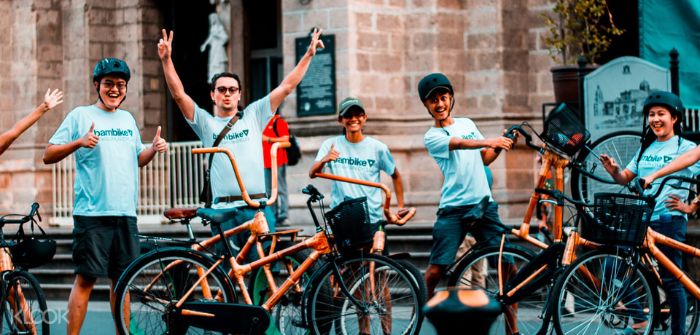
Credit: Klook – BamBike Experience
Bambike Ecotours recently introduced a new and wonderful way to explore Intramuros. For as low as P200 per hour, you can already go on a guided tour around the significant landmarks of the Walled City and you can also choose from several designs of their bikes. Amazing, isn’t it? Make sure to check out the official website of Bambike Ecotours for more information!
4. San Agustin Church
Another important part of our country’s history and religion is the Archdiocesan Shrine of Nuestra Senora de la Consolacion y Correa or widely known as San Agustin Church. To this date, this San Agustin Church is considered to be the country’s oldest stone church, being completed in 1607.

Credit: Wikimedia Commons
The church’s Medieval style in architecture easily captures the hearts of many as it perfectly depicts the classic way of life our ancestors lived. The style and grandeur of the structure itself are already a sight to see for many, but wait until you see the interior! San Agustin Church was built to display the greatness of the Spanish Era that’s why countless elegant features were installed such as chandeliers from Paris, the 18th-century pipe organ, the antechoir, and many more!
San Agustin Church is definitely a must-visit destination in the city and it will always be for many years to come.
5. Baluarte de San Diego
Yet another beautiful historical landmark located in Intramuros is the famous Baluarte de San Diego. It is a bastion, which is a sturdy and strategic structure to repel invasion. The structure is incorporated with several curtain walls so that soldiers will have a clearer view of incoming invaders, giving them much time to counterattack.
Just like all of the surrounding landmarks in Intramuros, many lives were lost and protected in the very location of Baluarte de San Diego. So before you explore its magnificent beauty, don’t forget to pay respects to all the brave souls that once walked around it. CHECK THE BEST HOTELS IN INTRAMUROS HERE
6. Casa Manila
Next on the list is probably one of the most aesthetically pleasing locations you can ever witness in Intramuros. Casa Manila is a popular museum within the Walled City depicting the classy colonial lifestyle of Filipinos during the golden era of the Spanish government.

Credit: Wikimedia Commons
Casa Manila Museum is actually a reproduction of a 19th-century grand mansion that is fully decorated and furnished to perfectly depict what it was like to live as a highly-respected Filipino in the 19th century. As I’ve said, the museum contains a countless collection of several significant pieces of history including antique furniture from China and Europe. Tourists can also witness what typical affluent Filipinos’ houses would look like.
Make the most of this time to take countless Instagrammable photos as much as you can! I’m sure every corner of Casa Manila Museum has a nostalgic vibe to it. So don’t miss the chance to check it out!
7. Museo de Intramuros
Another hidden gem you can find in Intramuros and certainly, one of the new ones is Museo de Intramuros. It is a legacy project created and managed by the Intramuros Administration. The museum contains an extensive collection of religious images and relics which played crucial roles in the evangelization of Filipinos throughout the Spanish colonial era.

Credit: Esquire PH
Museo de Intramuros is built on top of the location of San Ignacio Church Ruins. The majestic design of the museum is based on the original vision of the famous Filipino architect Felix Roxas. As I’ve mentioned, the museum houses an extensive collection of religious items over the almost 500 years Christianity has taken over the country. Spread throughout three (3) stories, you can find religious sculptures, colonial paintings, and historical representations of Intramuros.
Despite its already massive display of collections, officials have said that the Museo de Intramuros only shows 30% of its entire collection. There are still a lot more to come so make sure to support and appreciate our history and culture even more!
8. Silahis Center
It is always a delight for us Filipinos to appreciate art and culture. And one of the best places in our country to do that is no other than Intramuros. The Walled City has been a haven for everyone who wanted to witness massive collections of historical artworks and masterpieces.

Credit: Primer
Silahis Center is the main showroom of Silahis Arts and Artifacts whose main goal is to protect and promote the beautiful heritage of Philippine culture. Countless wonderful Filipino products and handcrafts were manufactured, sold, and retailed by Silahis throughout the years. Enabling them to not only promote the appreciation of our local handicrafts but also create jobs as the Silahis Center also features beautiful indigenous designs from the provinces.
The Silahis Center is divided into four (4) departments where you can witness an extensive display of traditional and cultural artifacts that are also being sold. So aside from being mesmerized by them, you can also opt to buy them as souvenirs! The 4 departments are the Silahis Arts and Artifacts, Chang Rong Antique Gallery, Tradewind Books, and Galleria de Las Alas.
To know more about their interesting collections and displays, just visit the official website of Silahis Arts and Artifacts!
READ THE BLOG POST: 15 Best 5-Star Hotels in Manila (For Luxury Travelers)
9. Barbara’s Heritage Restaurant
Ah, finally! No trip is ever complete without food, am I right? Well, for our next destination, let me introduce you to the famous Barbara’s Heritage Restaurant. Aside from bringing you the best-tasting gastronomic traditional Filipino-Spanish dishes, the restaurant is also known for elevating your dining experience through beautiful cultural music and dance performances!

Barbara’s is located inside the Casa Manila Museum so guests can also explore the beautiful artifacts displayed around. There’s also a separate Attic Museum and Gallery in the restaurant so it’s safe to say that you’ll both be entertained and have your cravings satisfied at the same time!
This hidden gem of a restaurant offers a delicious buffet of Filipino and Spanish foods so I suggest that you make the most out of your experience and taste them all! Barbara’s Heritage Restaurant also serves as a bed and breakfast so for those who want to enjoy a little bit more of Intramuros, you can always book a reservation at the official website of Barbara’s Heritage Restaurant.
10. Light and Sound Museum
Oh, so you thought we’re done exploring the rich and beautiful history of Filipinos? Well, not quite yet because another hidden gem of spectacular displays of culture and history is the Light and Sound Museum.

Credit: Reynelandrozie
One of the museum’s signature shows is the one retracing the footsteps of our very own national hero, Dr. Jose Rizal, towards his heroic demise. In the Light and Sound Museum, visitors are guaranteed to experience a recreation history with the masterful touch of light and sound. Feel free to be mesmerized with tons of artwork, visuals, and sounds for as low as P150 per hour! Not bad, right?
11. Bahay Tsinoy
Of course, Intramuros isn’t all about the contributions of the Spanish Colonial Era in our country. It has been standing for almost 500 years now so it’s safe to say that it came across other countries too like the Europeans, other Asian countries, and most importantly, China. China has been a massive influence on our country whether we talk about culture, economy, and history.

Credit: MoleInTheFoot
Bahay Tsinoy has long been a museum in Manila that houses several collections of the different contributions of the Chinese in our history, culture, tradition, and economy. It houses the recognized Kaisa-Angelo King Heritage Center which is responsible for collecting such important artifacts of our culture.
You can always come and appreciate these beautiful pieces of history in Intramuros so go ahead and check them out!
READ MORE : 15 Best Hostels in Manila
12. Aduana Ruins
Lastly, we have the beautiful Ruins of the Aduana Building. This Spanish colonial structure is also known as the Aduana de Manila or Intendencia. For centuries, this establishment housed several important government offices that played a huge role in our ancestors’ lives.

Credit: Ae goes around
To this day, the Aduana Ruins has become a popular tourist destination for its exceptionally beautiful design following a Neo-Classical touch of architecture. The appearance of the structure itself is already an attraction, but if you incorporate its historical significance, visiting the Aduana Ruins can always have a deeper meaning for some.
Intramuros has and always will be a massive part of our lives as Filipinos. It’s sort of a time capsule that enables us to go back to the past and have a look at how beautiful yet challenging life was back then. All of these while still being able to enjoy the present and appreciate the improvements taking place in our country.
Most of all, Intramuros serves as an ultimate reminder to everyone that the freedom we enjoy in the present came with a massive price. We should do our very best to appreciate it, protect it, and love it.
Intramuros Travel Guide 2024
How to get to intramuros.
Getting to Intramuros, the historic walled city in Manila, is easy with different transportation options. Here’s how you can get there:
By LRT 1 (Light Rail Transit)
- Fastest : Take the LRT 1 train and get off at Central Station. Then, just walk towards the entrance of Intramuros on Victoria Street, across from Manila City Hall. Intramuros is close to landmarks like the National Museum of the Philippines, Rizal Park, and the Manila Hotel.
- From Cubao : Take the LRT 2 at Cubao Araneta Station towards Recto Station. Get off at Recto Station and walk to Doroteo Jose Station LRT 1. Take the train bound for Baclaran and get off at Central Terminal. Walk towards Manila City Hall and use the underpass in front of the building to reach Intramuros.
- From SM City North EDSA : Ride a Jeepney or bus towards Balintawak and get off at Roosevelt LRT 1 Station. Take the LRT 1 train bound for Baclaran and get off at Central Station. Walk towards Manila City Hall, cross Taft Avenue using the underpass, and reach Padre Burgos Avenue, which leads to Intramuros.
By Jeepney
- From Monumento, Caloocan: Take the LRT 1 at Monumento Station and get off at Central Station. Walk towards Liwasang Bonifacio or Manila City Hall, cross Taft Avenue using the underpass, and follow Padre Burgos Avenue to reach the east side entrance of Intramuros.
- Take a Jeepney with a sign for Baclaran or Gil Puyat. Let the driver know you’re going to Intramuros. Usually, they’ll drop you off at the center island of the Manila City Hall underpass. From there, take the underpass to cross Taft Avenue and reach Padre Burgos Avenue. Follow C. Victoria Street to the east side entrance of Intramuros.
Of course, for faster travel time, you can always take a taxi, Grab, Joyride , Move It , Angkas or any ride-hailing app going straight to Intramuros.
More Manila Blog Posts:
- Best Staycations in Manila
- The woman I met at a Manila Park
- PITX to Lawton, Manila (Guide, Tips & More)
- Quiapo Church Mass Schedule
- MRT Schedule and Stations

previous
PURPLE OVEN MENU & Delivery 2024 (Freshly Baked, Flavorful Goodness)

newer
Supercat: CEBU TO ORMOC 2024 (v.v. Schedule, Fare & More)
You might also like.

Kawit Cavite Heritage Tour and Attractions

Albay Tourist Spots in One Day
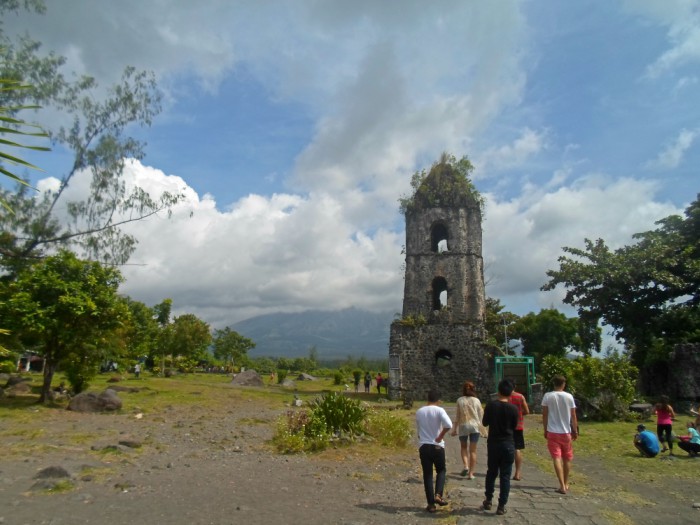
Cagsawa Ruins in Daraga, Albay
Leave a reply cancel reply, privacy overview.
Manila Heritage Churches and Cultural Tour with Kalesa Ride | Manila Cathedral, San Agustin Church
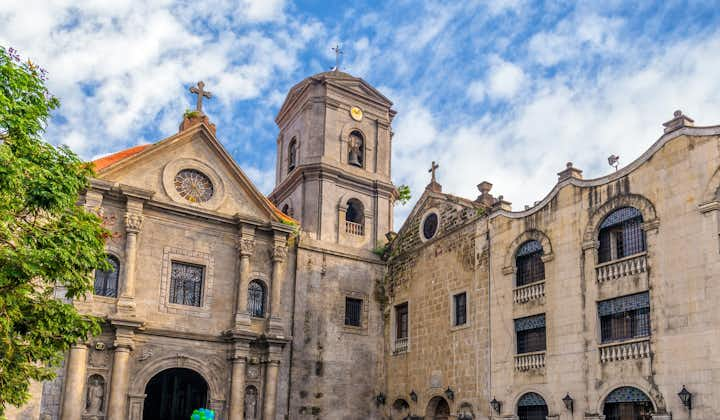
Description
Immerse yourself in the history and culture of Manila with this private heritage churches tour. This tour will take you to culturally significant spots in the city, including the Manila Cathedral and San Agustin Church. This Manila tour also includes a kalesa ride in the walled city of Intramuros and the assistance of an English-speaking tour guide. You may also book add-on transfers from and to your hotel in Manila or Makati.
Since you will be visiting several churches on this tour, please dress appropriately and refrain from wearing revealing clothing. Your tour starts when you arrive at the Manila Cathedral. If you have not booked transfers, your guide will meet you here 30 minutes before your tour starts.
After you have met up with your guide, you will tour Manila Cathedral. Originally built in 1571, it has undergone several renovations after being damaged by several earthquakes, a typhoon, and even a fire. It is officially named the Minor Basilica of the Immaculate Conception Manila Metropolitan Cathedral and is the seat of the Archbishop of the Archdiocese of Manila.
Your next activity is a 30-minute kalesa ride in Intramuros . You will start at Plaza Roma , just outside Manila Cathedral. A kalesa is a traditional horse-drawn carriage used in the Philippines during the Spanish era. On your ride, you will see some Spanish-era structures within the walled city.
Once your ride is done, you will head to the San Agustin Church and Museum . It is the oldest stone church in the Philippines. San Agustin Church is not only a recognized National Cultural Treasure and National Historical Landmark but also part of the four Baroque churches that are included in the UNESCO World Heritage list.
Before you continue with your tour, you will have lunch (own expense) at either Cabel Restaurant or Emila House of Filipino Food.
Following your meal, you will continue your tour with visits to San Sebastian Church , another recognized National Cultural Treasure and National Historical Landmark and the only steel church in the Philippines, and Quiapo Church , which is home to the Black Nazarene that devotees believe to be miraculous.
You’ll also drop by Plaza Miranda and the Quiapo Church before heading to your last stop, the Santa Cruz Church, which was built during the Spanish period for the Chinese that lived nearby.
If you booked hotel transfers, you will be dropped off at your accommodations in Manila or Makati. Otherwise, after the tour, you are free to spend the rest of the day however you wish.
Explore the churches of Manila and learn more about the city’s history when you book this tour. Check the availability by choosing a date.
Attractions
What to bring
Good to know.
Tour Information: This private tour is available daily from 09:00AM to 03:00PM.
Meet-up Information: Guide to the Philippines will send tour reminders at least (1) day before the tour date through your registered email address. Make sure to have the electronic copy of your confirmed tour voucher ready. On the day of the tour, your assigned Tour Guide will meet you at The Manila Cathedral, Cabildo cor. Beaterio St., Intramuros, Manila, Philippines 1002 at least thirty (30) minutes prior to start of the tour. Strictly no latecomers or tour reservation might be forfeited.
Tour Proper: Guests are encouraged to be in their most comfortable clothes and footwear for the duration of the tour. Please be reminded also to dress appropriately, strictly no revealing clothes as we are entering churches. Be mindful of your personal belongings during the tour.
Children Friendly: Yes!
Pet Friendly: No. Please understand that the establishment does not allow pets inside.
Senior Citizen/PWD Friendly: Yes. However, please be advised that this tour includes mostly walking tours and may not be suitable for PWDs or individuals with existing cardiovascular ailments.
Cancellation Policy: The operator may cancel the activity in case of force majeure or unforeseen circumstances like weather conditions. In this case, you will be given the option to reschedule or request a full refund. Schedule cancellation requests must be made 48 hours before your original subject to approval. No shows are not entitled to reschedule and refund.
Similar tours

Download the Philippines’ biggest travel marketplace to your phone to manage your entire trip in one place
Scan this QR code with your phone camera and press the link that appears to add the Philippines’ biggest travel marketplace into your pocket. Enter your phone number or email address to receive an SMS or email with the download link.
Top things to do in the Philippines
Discover all the adventures you can experience in the Philippines

Philippines Tour Packages

Boracay Island

Bohol Island

Cebu Island

Coron Palawan

El Nido Palawan

Siargao Island
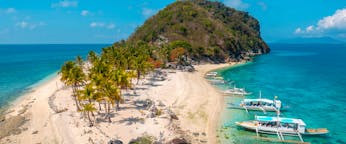
Iloilo City and Nearby

PH +639457650047 / +639158563793 (Viber Call & Text/Whatsapp)
- a cultural tour -

Ride around historic walled city of Manila on a bamboo bike with Bambike Ecotours! Book now and you can experience this Intramuros Bambike Tour and visit a lot of historical and cultural sites in Manila while riding the bamboo bikes.
Comfortable 1.5 hour tour across Intramuros when the sun has gone down! We will start when the sun is about to set and cruise through the lighted streets for Intramuros. Bambike will be equipped with front lights and blinkers.
INTRAMUROS TOURS/ACTIVITIES
-gallery -.


IMAGES
VIDEO
COMMENTS
Intramuros, the historic heart of Manila, is a treasure trove of cultural heritage, and the Intramuros Walking Tour offers an immersive experience that brings its storied past to life. Led by knowledgeable guides, this tour offers a fascinating glimpse into the Philippines' colonial history and architectural splendor.
In addition, the rampart, fortresses, and gates from yesteryears remain accessible and are a mainstay of today's walking tours and cultural performances for visitors who want to understand the country's past. Go down memory lane and learn the history within the walls. Bookmark this guide handy for planning your Intramuros tours!
Itinerary: Fort Santiago, Old City Walls, Plaza Roma, Manila Cathedral, San Agustin, Barrio San Luis. Tour duration: 2 to 2.5 hours. Rates: PHP 1,750/head; PHP 1,950.00 on Weekends and Holidays; PHP 1,800.00/head night tour (after 5:00PM). Rates subject to change at any time. Go here for more information.
Unpick the historical threads of Philippine culture as you stroll Manila's 16th-century walled city, Intramuros, with a guide. Hear how Manila evolved through Malay, Spanish, American, and Japanese eras; learn about pre-colonization peoples and the national hero Dr. José Rizal; and see colonial-era sights including San Agustin Church and Museum, a UNESCO World Heritage Site. Enjoy bottled ...
Intramuros is unparalleled in its ability to offer a comprehensive look at Manila's historical and cultural evolution. From the architectural wonders of its churches and fortifications to the immersive experiences of its museums and guided tours, Intramuros stands out as a cornerstone of Philippine tourism.
Experience and learn Intramuros's rich history and culture on this guided walking tour. Discover Manila with a local guide by your side and marvel at the San Augustine Church, Manila Cathedral, and Fort Santiago, to name a few. Intramuros is known as the walled city because it was mainly built as a defensive curtain to defend the occupant from ...
Delve deep into rich history and vibrant culture with a guided tour of Intramuros. Russell 's engaging commentary brings history to life, offering unique insights. Exceptional reviews highlight immersive exploration and educational experiences. Tour pricing from €28.28 includes historical narratives, site entrance fees, and transportation.
Embark on an unforgettable Intramuros tour and step back in time to colonial-era Manila. Located within the heart of the bustling city, Intramuros is a walled city that holds centuries of history and cultural heritage.
Next, cross the street and enter an expertly restored, 19th-century aristocrats' home and marvel at the furnishings and design, located at the point where east and west influences meet. Make your way toward a rarely visited part of the historic wall of Intramuros and catch a glimpse into its marvelous past. Then, step into the history museum ...
On the day of your tour, meet with your tour guide at the plaza across the Manila Cathedral. Make sure to be there at least thirty minutes before the start of the tour to avoid delays. You will then begin your walking tour of Intramuros. Your first stop is the time capsule. Located in Plaza de Sta. Isabel, behind the Memore Manila 1945 monument ...
bugking88/Getty Images. Begin at the Intramuros Visitors' Center at the restored Baluartillo de San Francisco Javier in Fort Santiago (Google Maps).This is an ideal jumping-off point for many walking tours through Intramuros, or independent visits to Intramuros' top sights.. At the Center, you can pick up brochures on the places you plan to see or find out about scheduled cultural events in ...
The Walled City of Intramuros in Manila City is located south of the Pasig River and east of Manila Bay. It was constructed by Spanish colonizers in the mid 1500s after their arrival to serve to establish their military and political bases in Asia. Intramuros was constructed as a city with a privileged status with churches, schools and ...
Nov 2023 • Friends. This is a perfect tour to gain an understanding of the history of Manila and The Philippines. Fantastic tour guide, great music, stories, a kalesa trip around the walled city, and visits to Fort Santiago, Manila Cathedral, St Augustins Church and the Museum are all included.
Old Manila Walks is one of the biggest walking tour companies that operate in the city. It offers five different tours: Intramuros (P1,500+), Binondo (P1,750+), San Miguel and Malacañang Palace (P1,750), Chinese Cemetery (P1,300), and a halo-halo tour combo you can customize (P2,850). Binondo Church. Photo courtesy of Old Manila Walks.
See Manila's oldest district, the known "walled city" of Intramuros, as you go on an exciting tour through Bambike Ecotours. As a well-known tourist attraction in Manila, many people flock to Intramuros, the historical city where one can learn of the beauty and story of the Spanish conquest in the Hispanic period. With the […]
Set out on a captivating journey through Manila's historic walled city of Intramuros, where the tour's highlights include iconic landmarks such as Fort Santiago, Manila Cathedral, Casa Manila Museum, Rizal Park and Shrine, and San Agustin Church and Museum. These historic landmarks offer visitors profound cultural insights into Manila's rich heritage.
The Intramuros tour is a historical walking tour around the famous fort built by the Spanish. The tour will focus on the greatest and darkest moments during the long history of Intramuros, with details of what transpired within the walls of Intramuros during the Battle of Manila and beyond. You can enjoy learning something about this historical ...
Intramuros is the ancient heart of Manila, a walled city that showcases the rich history and Spanish architecture of Old Manila. Built by the Spaniards as their political and military base in Asia, this historical gem has become one of the Philippines' most popular tourist spots. Surrounded by 22-foot-high walls, Intramuros is easily ...
5. Ghost Tour. If you love history and horror, then the Intramuros Ghost Walk is for you. It is an alternative take on the historical tour within the walls that happens at night. Visit their facebook page, Intramuros Ghost Walk to message them and to get to know more. The tour fee is at Php250 per person. You are required to at least fill in 8 ...
You will then return to the Bambike Ecotours Headquarters to learn more about the Bambike's work for the people, planet, and progress before officially ending your tour. Pedal your way around the iconic sites of Intramuros with this off-the-beaten-path historical sunset tour. Check the availability by choosing a date.
6. Casa Manila. Next on the list is probably one of the most aesthetically pleasing locations you can ever witness in Intramuros. Casa Manila is a popular museum within the Walled City depicting the classy colonial lifestyle of Filipinos during the golden era of the Spanish government. Credit: Wikimedia Commons.
Immerse yourself in the history and culture of Manila with this private heritage churches tour. This tour will take you to culturally significant spots in the city, including the Manila Cathedral and San Agustin Church. This Manila tour also includes a kalesa ride in the walled city of Intramuros and the assistance of an English-speaking tour ...
Book now and you can experience this Intramuros Bambike Tour and visit a lot of historical and cultural sites in Manila while riding the bamboo bikes. Comfortable 1.5 hour tour across Intramuros when the sun has gone down! We will start when the sun is about to set and cruise through the lighted streets for Intramuros. Bambike will be equipped ...